Nuclear physics and
neutron-rich nucleosynthesis

LA-UR-18-XXXXX
Matthew Mumpower
ANL Seminar
Monday Nov. 12$^{th}$ 2018

FIRE Collaboration
Fission In R-process Elements
Neutron stars
Mass of around 1.1 to 3 M$_\odot$
Density $10^{9}$ to $10^{17}$ kg/m$^{3}$
Magnetic field $10^{10}$ Tesla
Color depends on equation of state...
A close binary of neutron stars
GW170817 - named for the day it was discovered
NGC 4993 - about 40 Mpc away
A close binary of neutron stars
Important for GCE
Coalescence time: ~1 million years
Grav waves are emitted
Chirp mass $\sim 1.188$
implies NS binary
Neutron stars merge
Many open problems...
Is GW170817 a typical event?
What is the morphology of the remnant?
What is the typical timescale for the merger? (statistics)
What are the properties of the equation of state?
What is the tidal deformability?
What role can neutrinos play?
How much material can be ejected?
What heavy elements can be created?
Electromagnetic counterpart
Kilonova: powered by the radioactive decay of heavy nuclei

Model assumptions: M$_{\textrm{ej}} = 10^{-2}$ M$_\odot$, V$_{\textrm{ej}}=0.3$c
Very low lanthanide fraction
Electromagnetic counterpart
Kilonova: powered by the radioactive decay of heavy nuclei
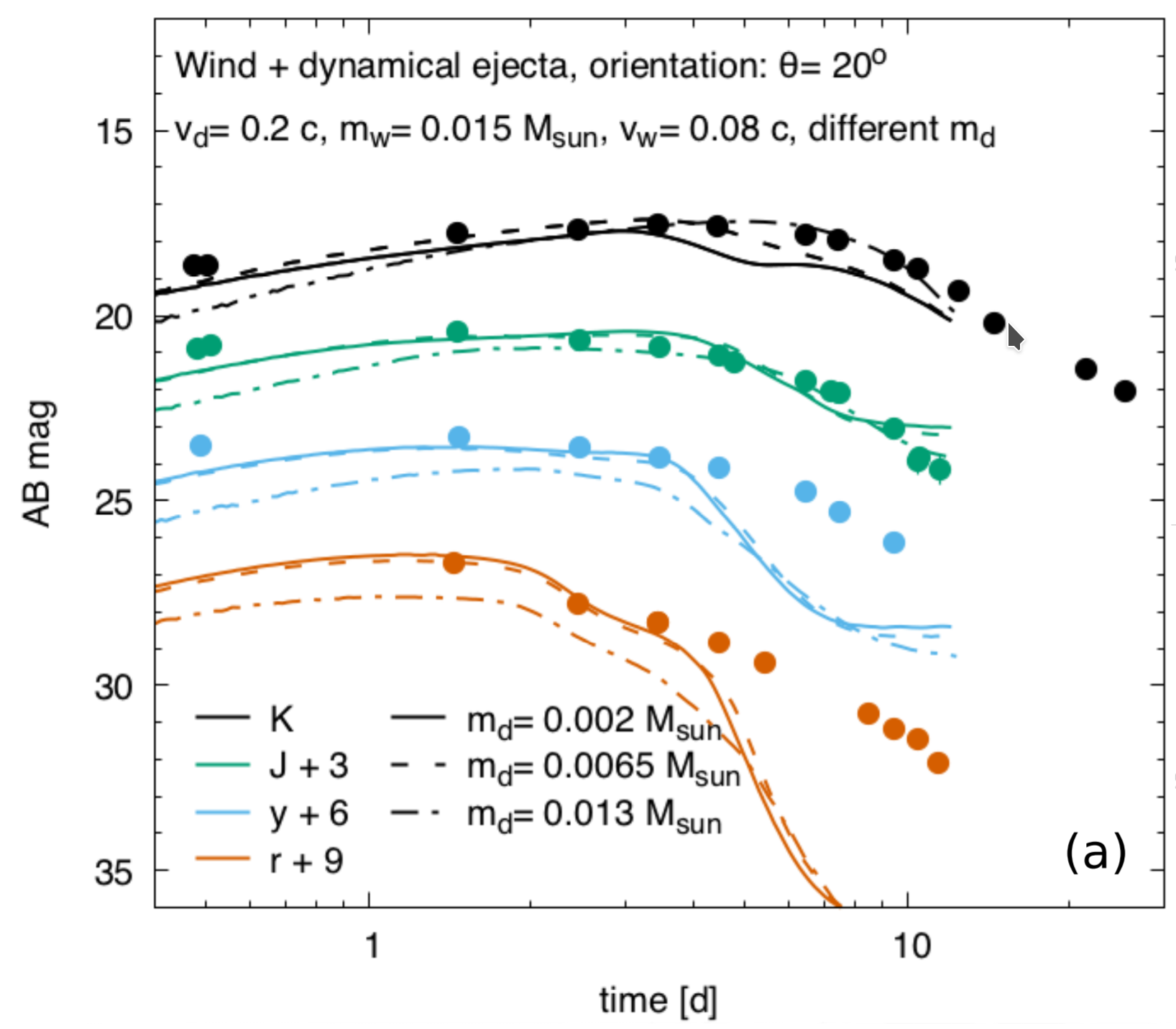
To match data at later times
Some lanthanide production is needed
Schematic of a kilonova
2 component model: wind & dynamical eject
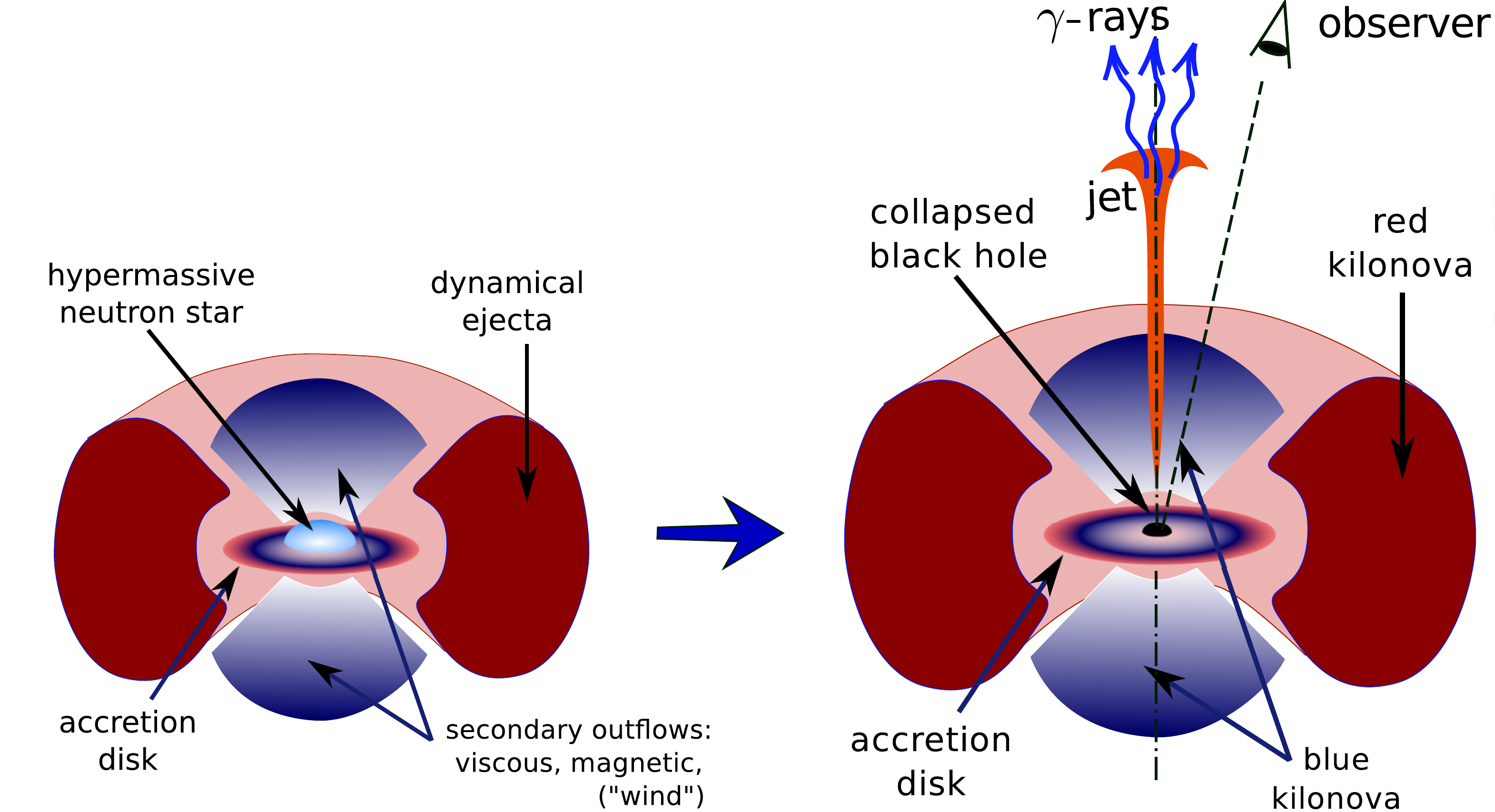
Red emission: late (weeks); lanthanide dominated
blue emission: early (days); UV dominated
The Problem
We want to describe the abundances observed in nature

But there is uncertainty in:
The astrophysical conditions (large variations in current simulations)
The nuclear physics inputs (1000's of unknown species / properties)
Both are required to model the nucleosynthesis
Inputs from nuclear physics
1st order: masses, $\beta$-decay rates, reaction rates & branching ratios
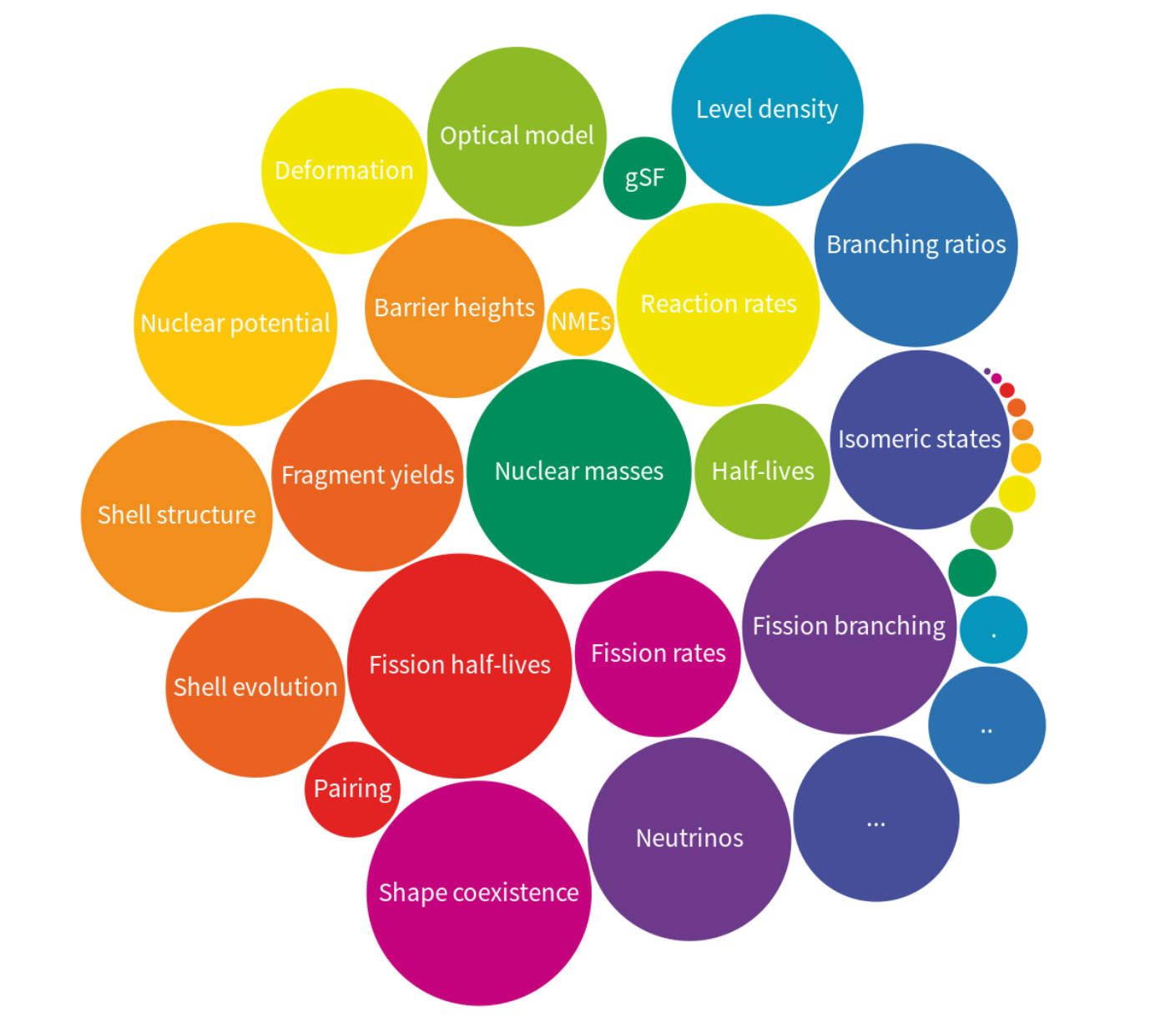
What do we know?
The chart of nuclides
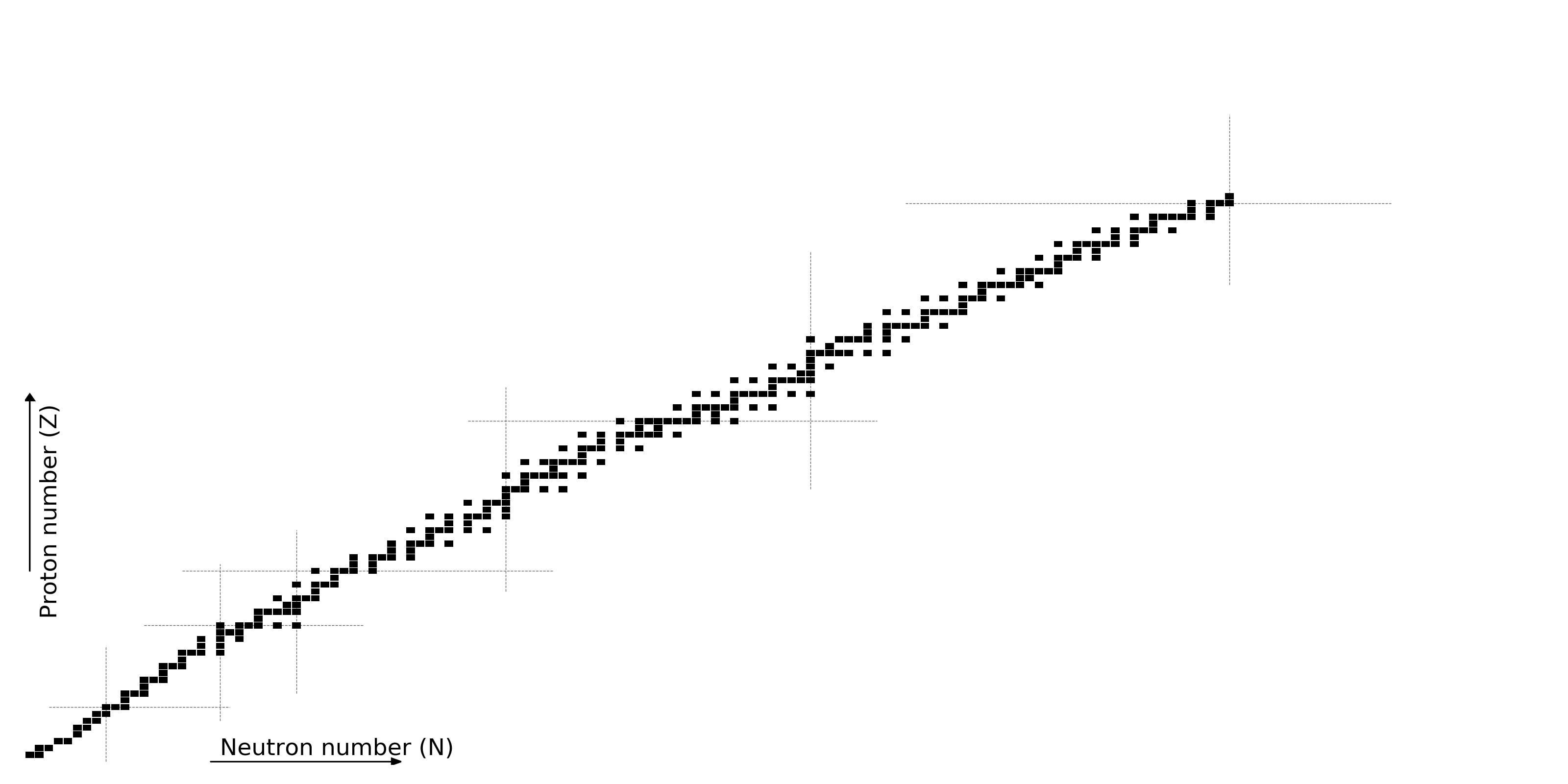
What do we know?
All half-lives

What do we know?
Nuclear masses
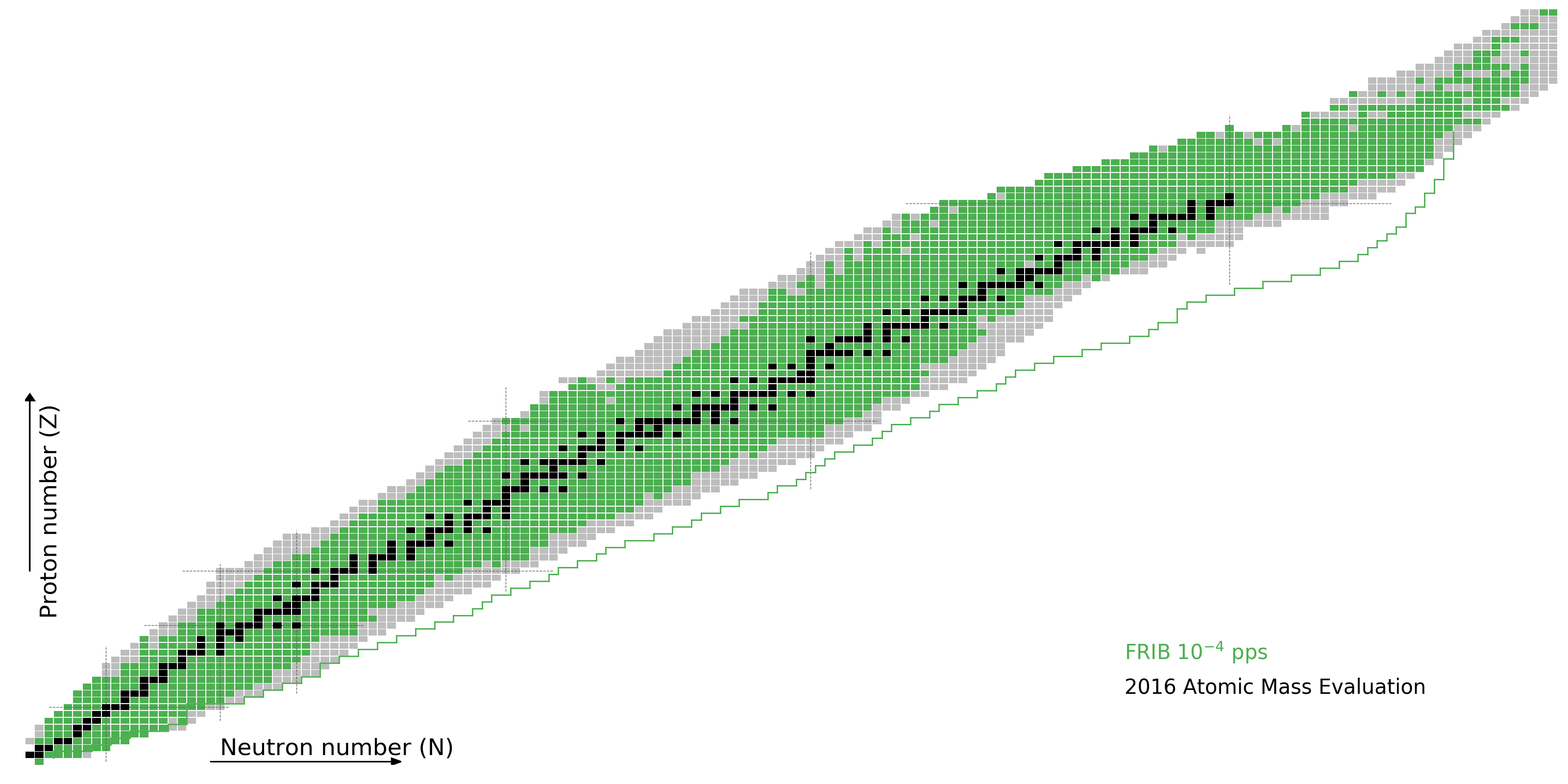
What do we know?
Neutron capture rates
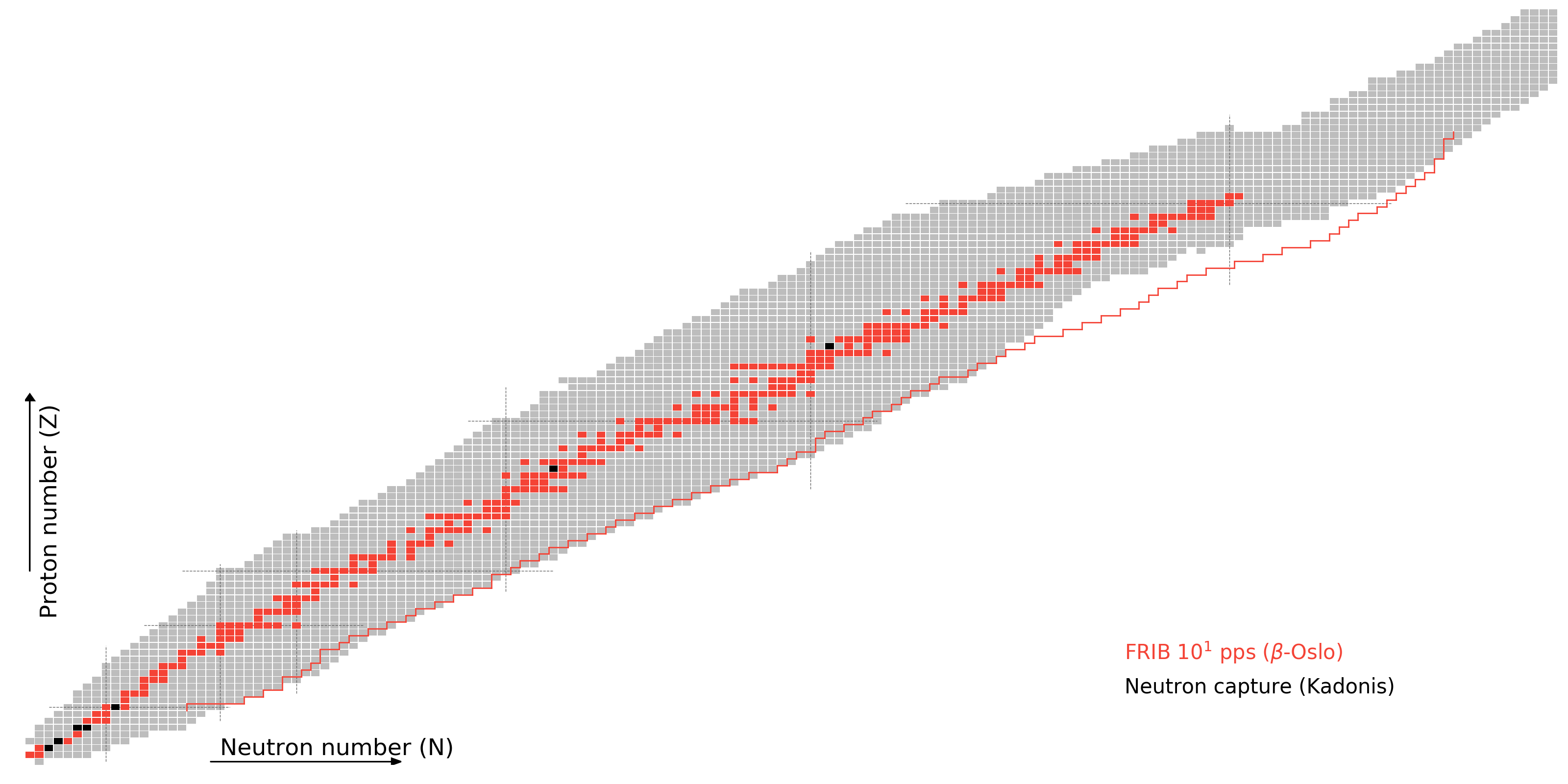
What do we know?
As of today, to varying degrees of accuracy
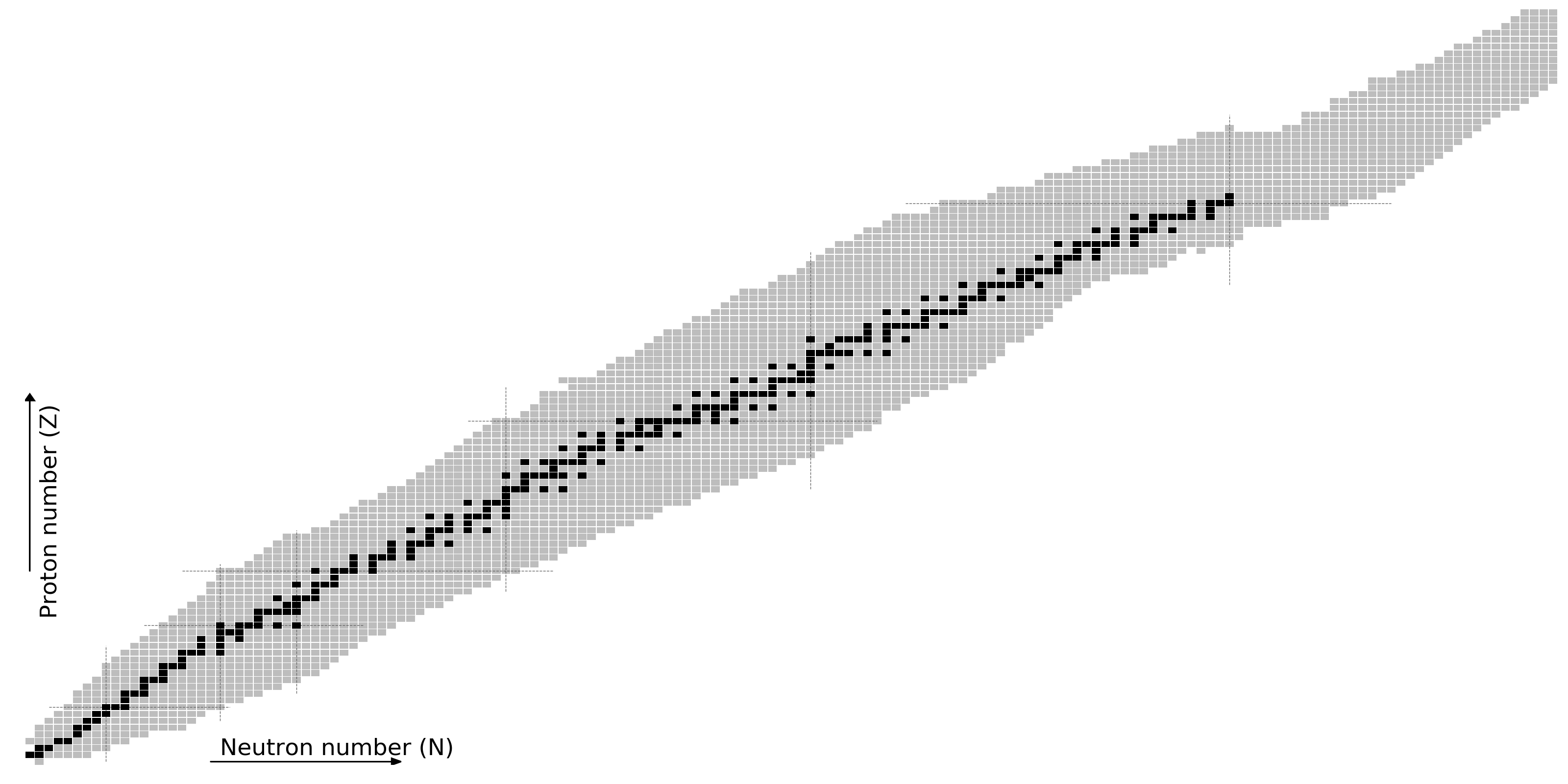
The Future
FRIB as the $r$-process machine
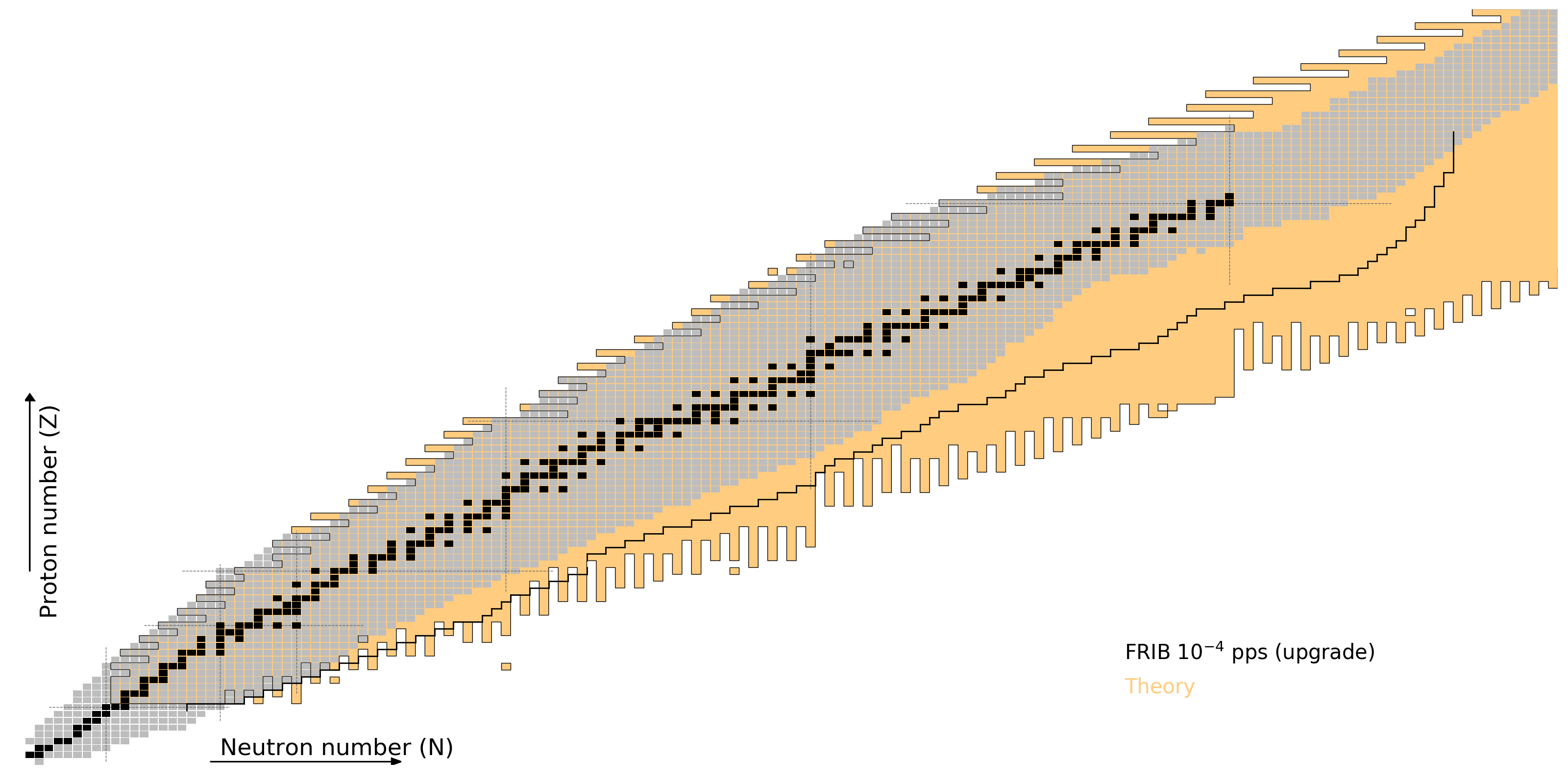
$r$-Process Calculation
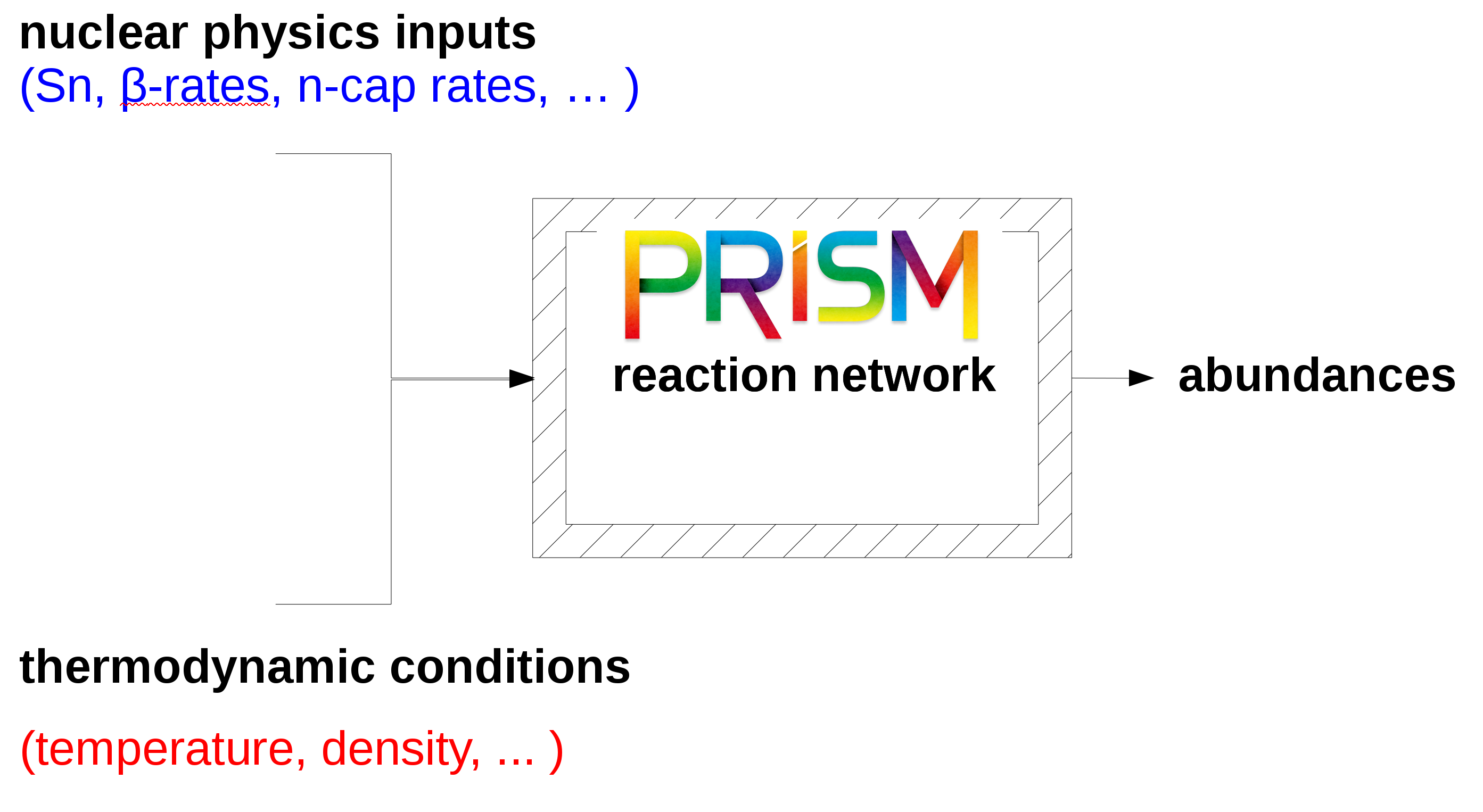
PRISM: Portable Routines for Integrated nucleoSynthesis Modeling
Results
Mass measurement campaign with CPT
Variation in masses
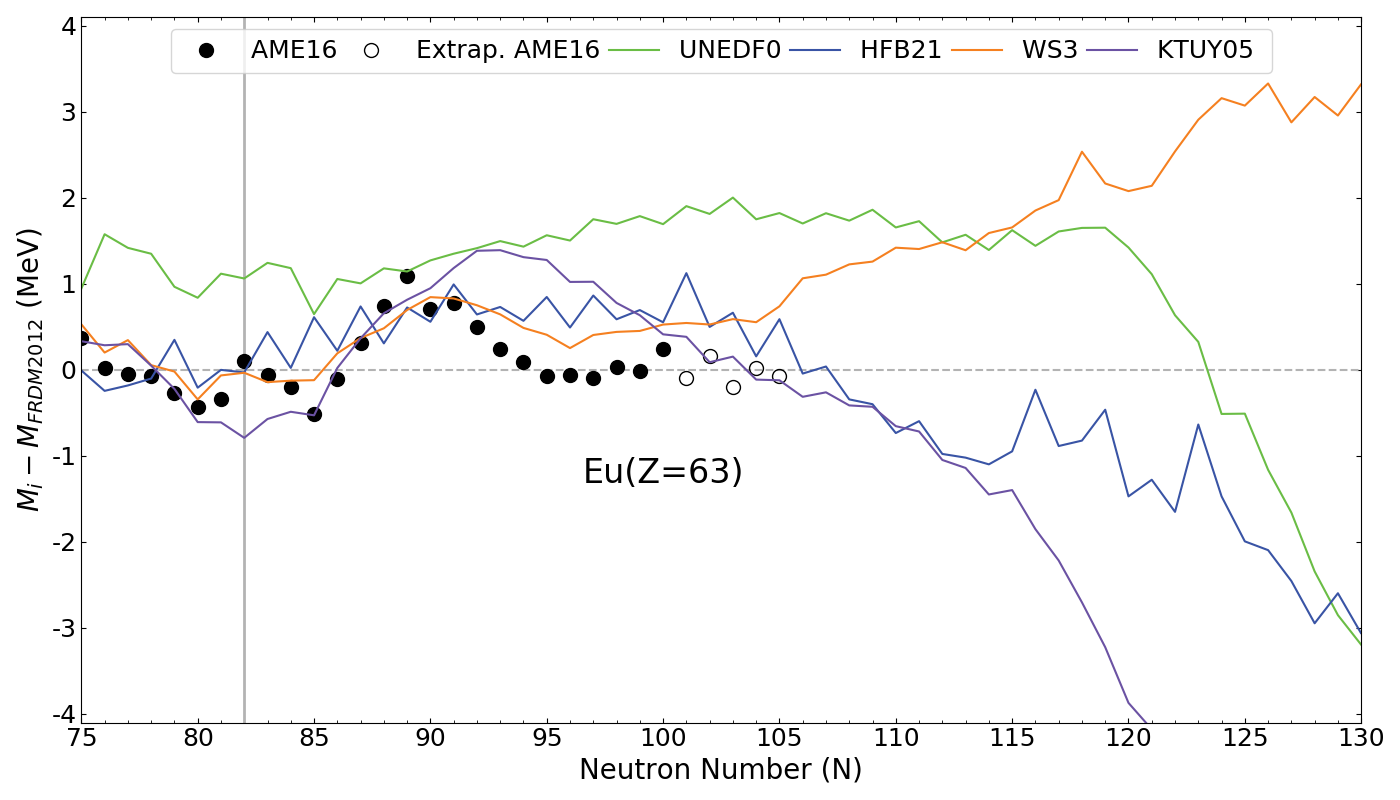
Large variation in mass model predictions further from stability
Why focus on masses?
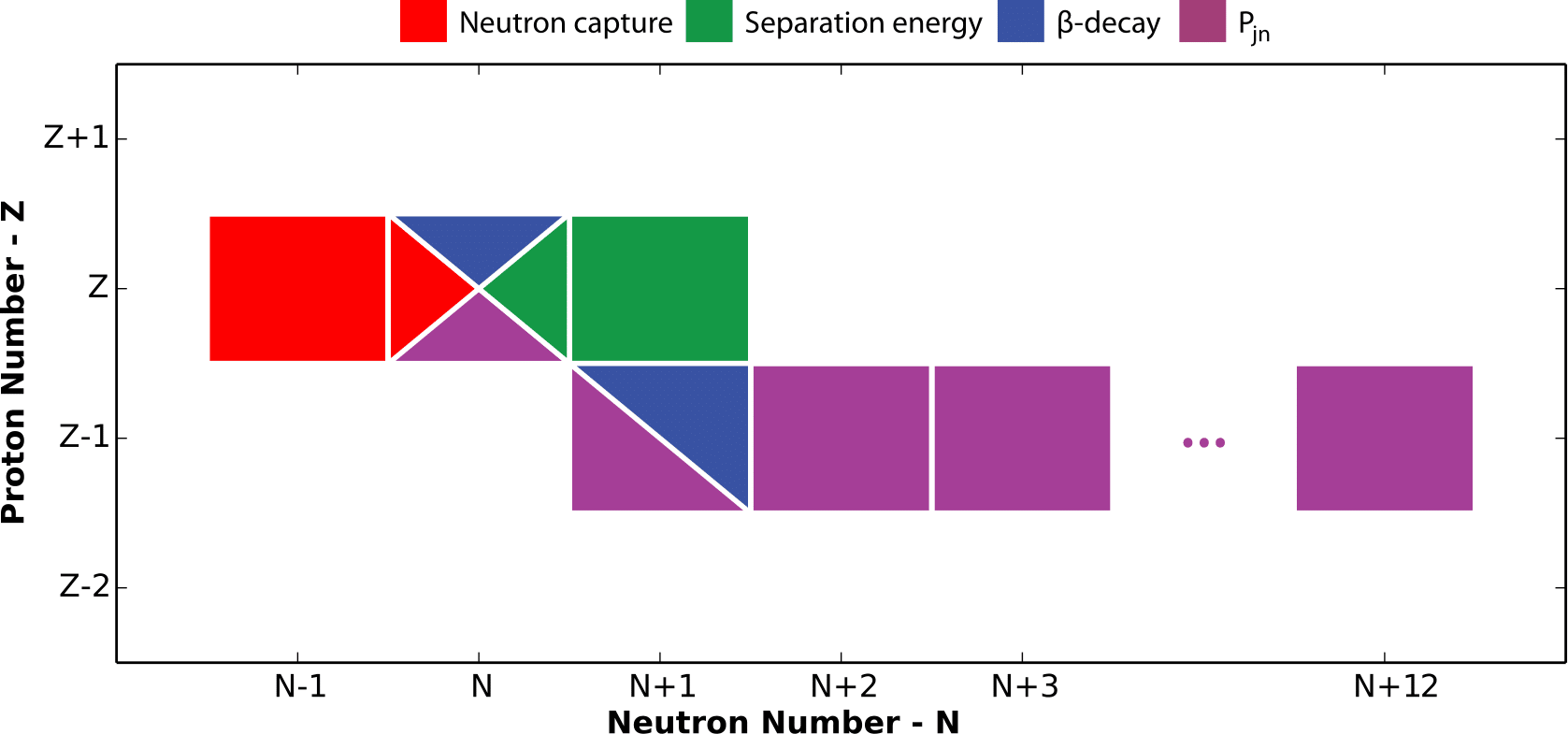
Masses go into the calculation of all other relevant quantities...
Thus if we change a single mass in our network then we have to recalculate many other quantites!
Uncertainties from masses
Hot wind: $S\sim200$, $\tau=80$ ms, $Y_e=0.3$

Uncorrelated mass Monte Carlo study; not full propagation
Uncertainties from masses
Hot wind: $S\sim200$, $\tau=80$ ms, $Y_e=0.3$

Uncorrelated mass Monte Carlo study; not full propagation
Rule of thumb: $\Delta_\text{mass}\sim500$ keV $\Rightarrow$ $\Delta_Y\sim 2-3$ orders of magnitude
The rare earth peak

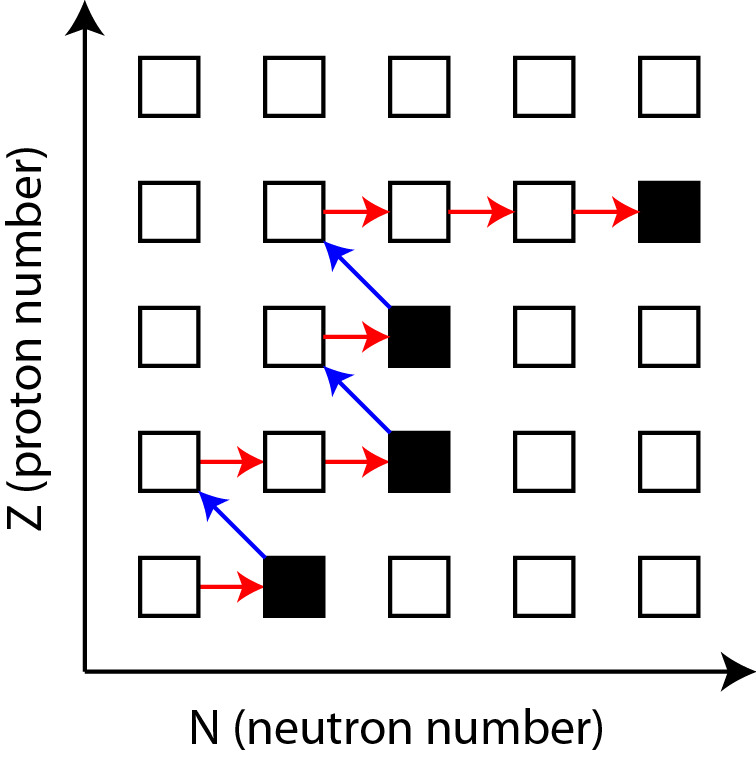
Proposed ways to form the REP
- Dynamical formation during freeze-out ($R\lesssim1$)
Requires a localized nuclear structure effect (kink) - Via fission fragment yields
Requires dumping heavy products in exactly the right spot
Region of enhanced lanthanide production (important for observations)
Sensitive to nuclear physics inputs and astrophysical conditions
The Bayesian Approach
An example... The Monty Hall problem
A new car is hidden behind one of the doors
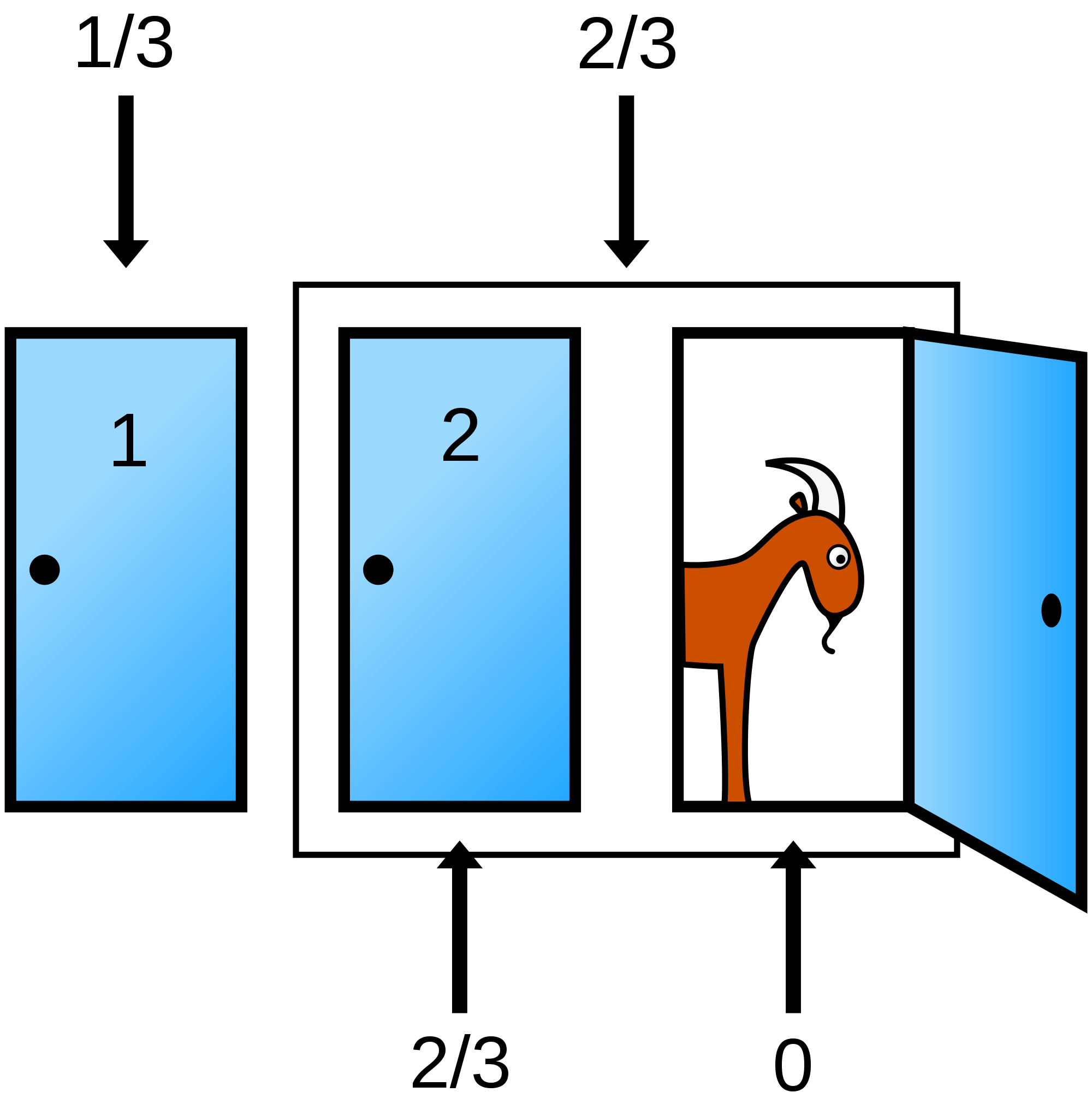
The optimal strategy is to switch the initial pick - twice the chance of winning the new car
We update our probabilities based off new information
Reverse engineering: Update mass prediction based off the match of $r$-process calculation to observations
Our new mass predictions
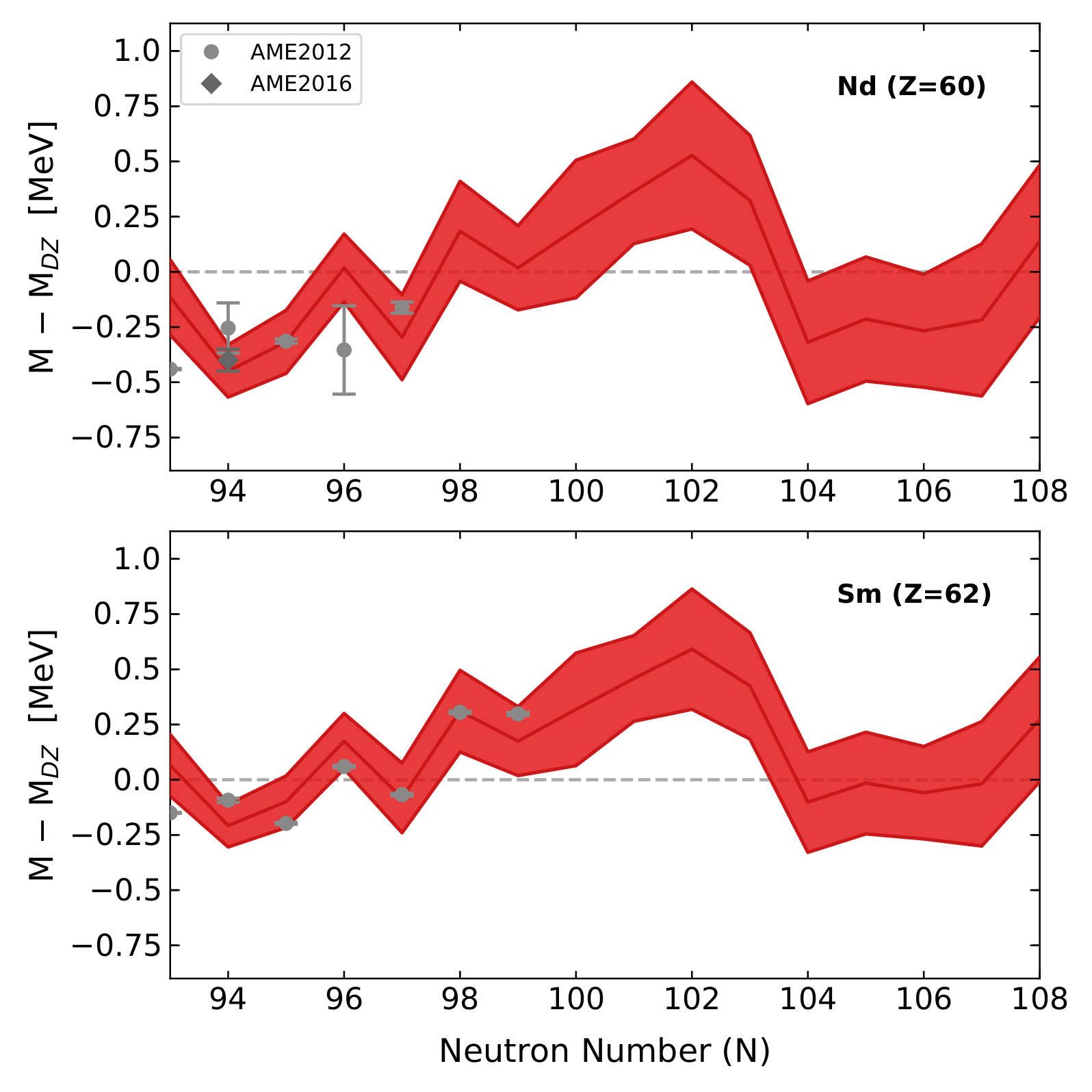
Bayesian prior (DZ mass prediction) is a straight horizontal line
Our algorithm found a The trend
Our new mass predictions
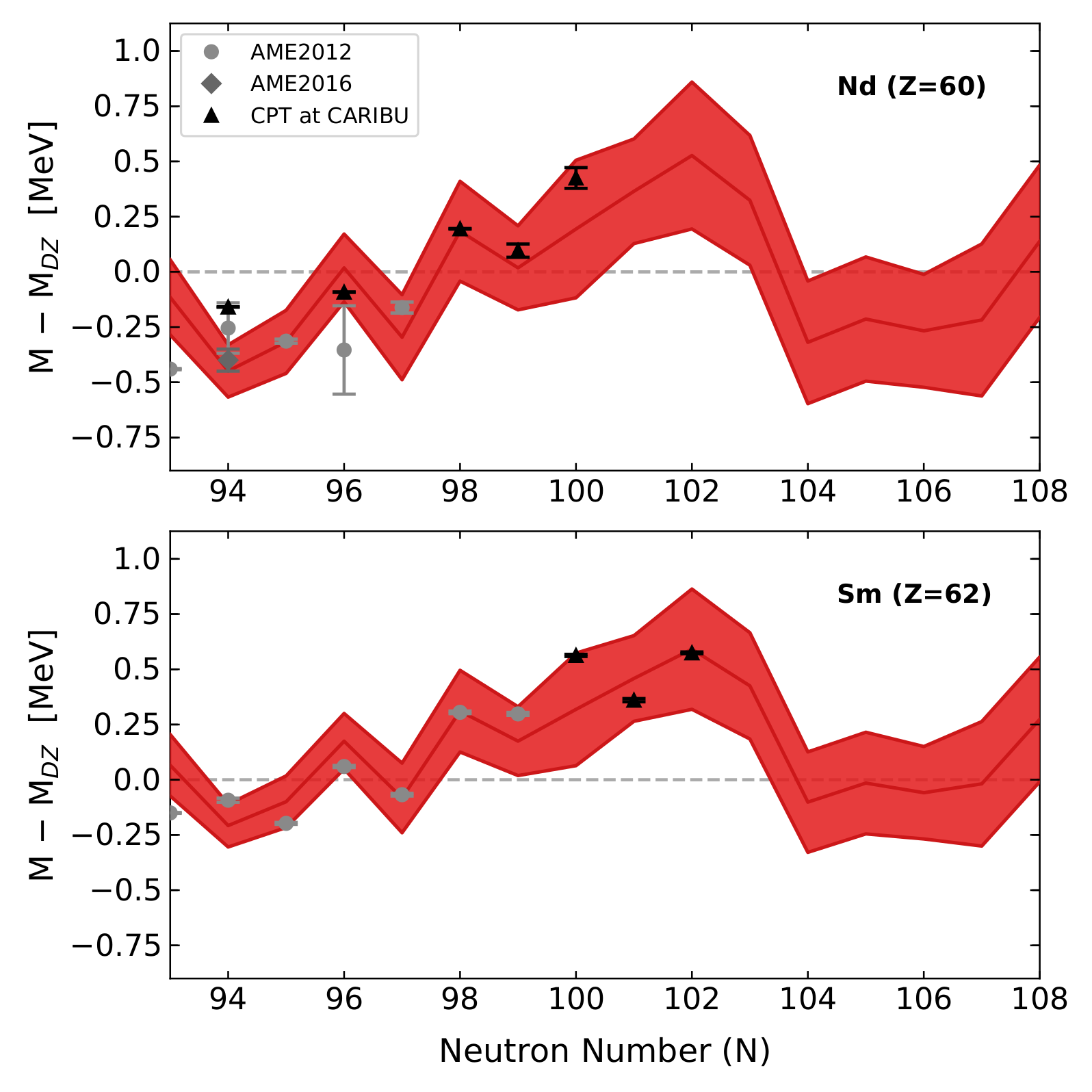
The predicted trend matches CPT data!
The downturn between N=102 and N=104 is near the midshell - critical for peak formation - will it also be found?
Sensitivity to astrophysical conditions
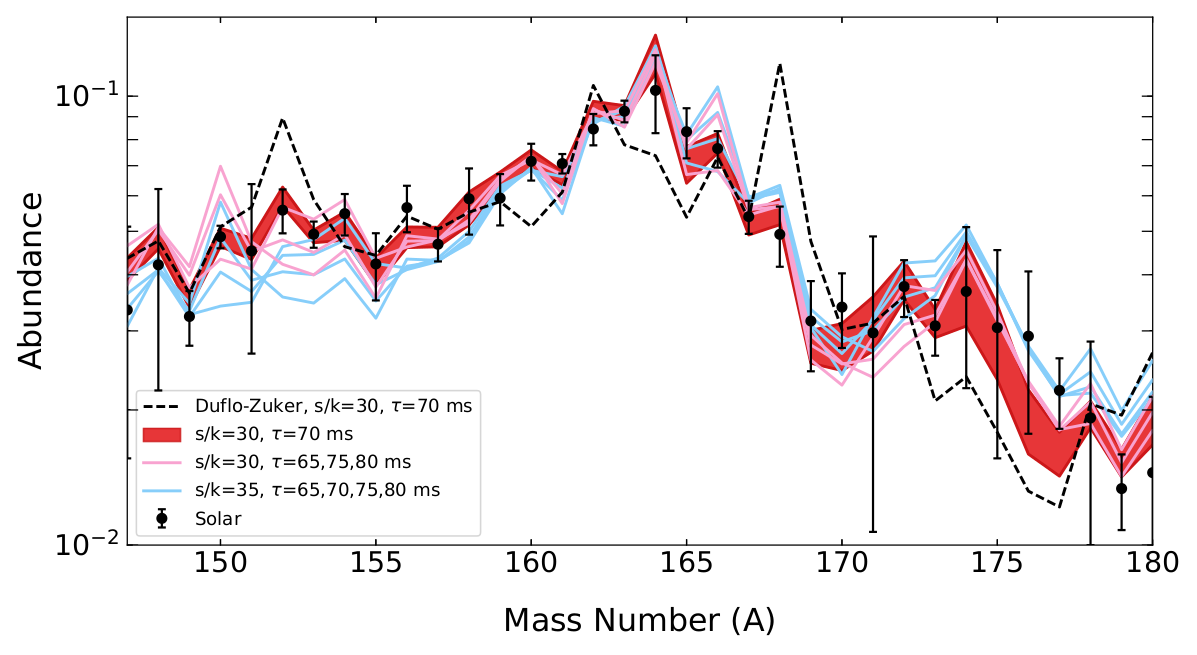
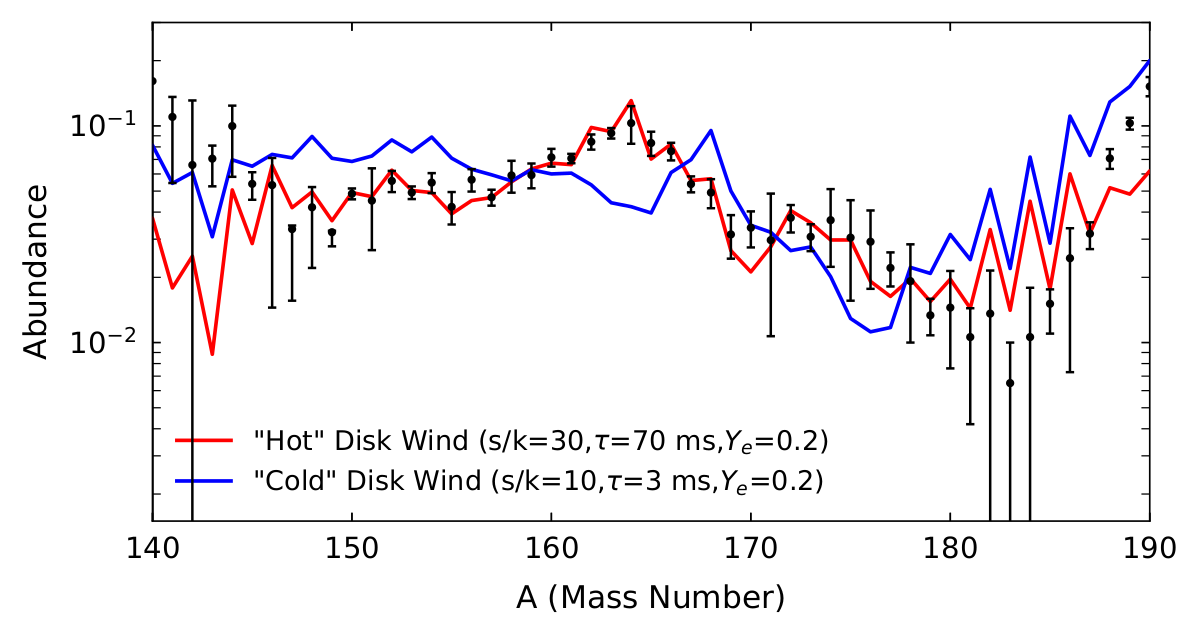
The trend is robust for small changes to astrophysical conditions (left)
But if we change the conditions too much (right) we no longer fit the abundances
This result is completely dependent on the N=104 feature which has yet to be measured
The possibility for mass measurements to discrimenate between astrophysical conditions is nearly at hand!
Improvements to
branching ratios & fission
$\beta$ -delayed neutron emission
Discovered in 1939 by R.B. Roberts et al.
Delayed emission with half-life of precursor
Energetically possible: $Q_\beta$ > $S_n$ Important for neutron-rich nuclei
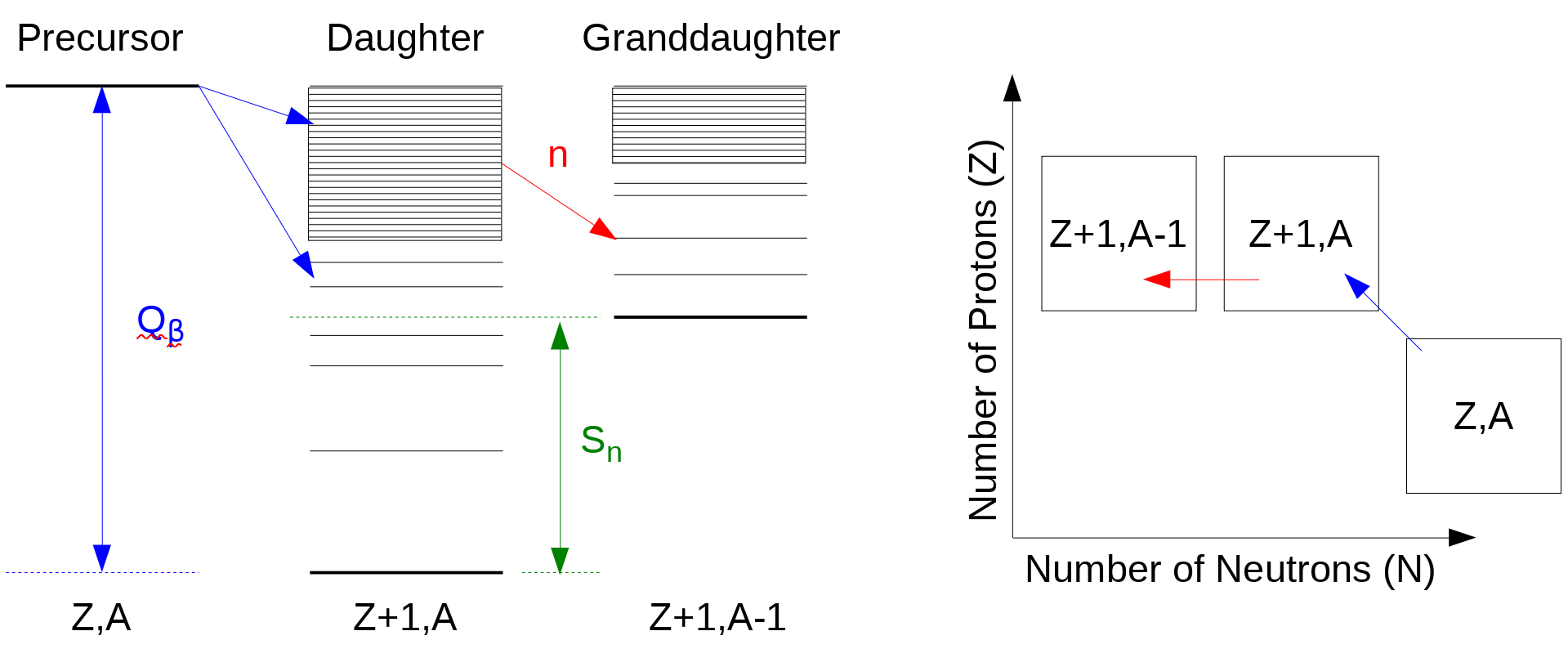
Combining QRPA + HF
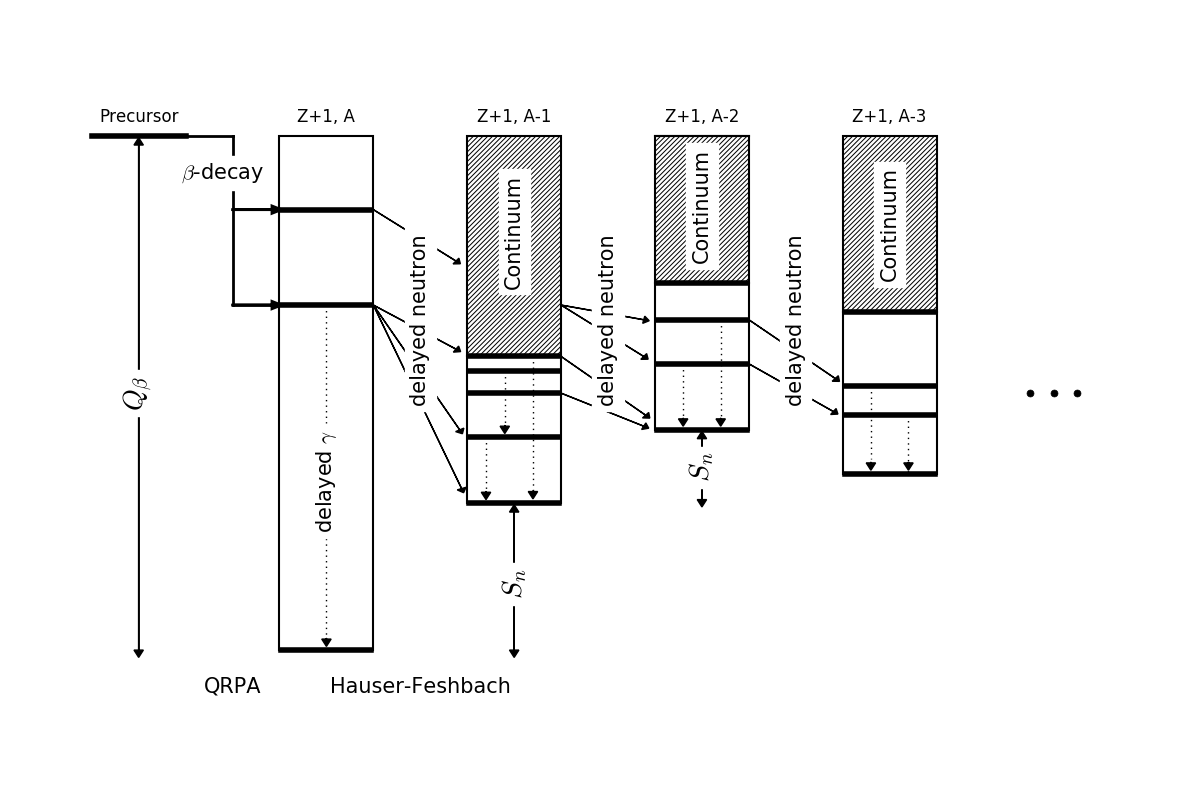
Initial population from the $\beta$-decay strength function from P. Möller's QRPA
Follow the statistical decay until all excitation energy is exhausted
Average neutron emission
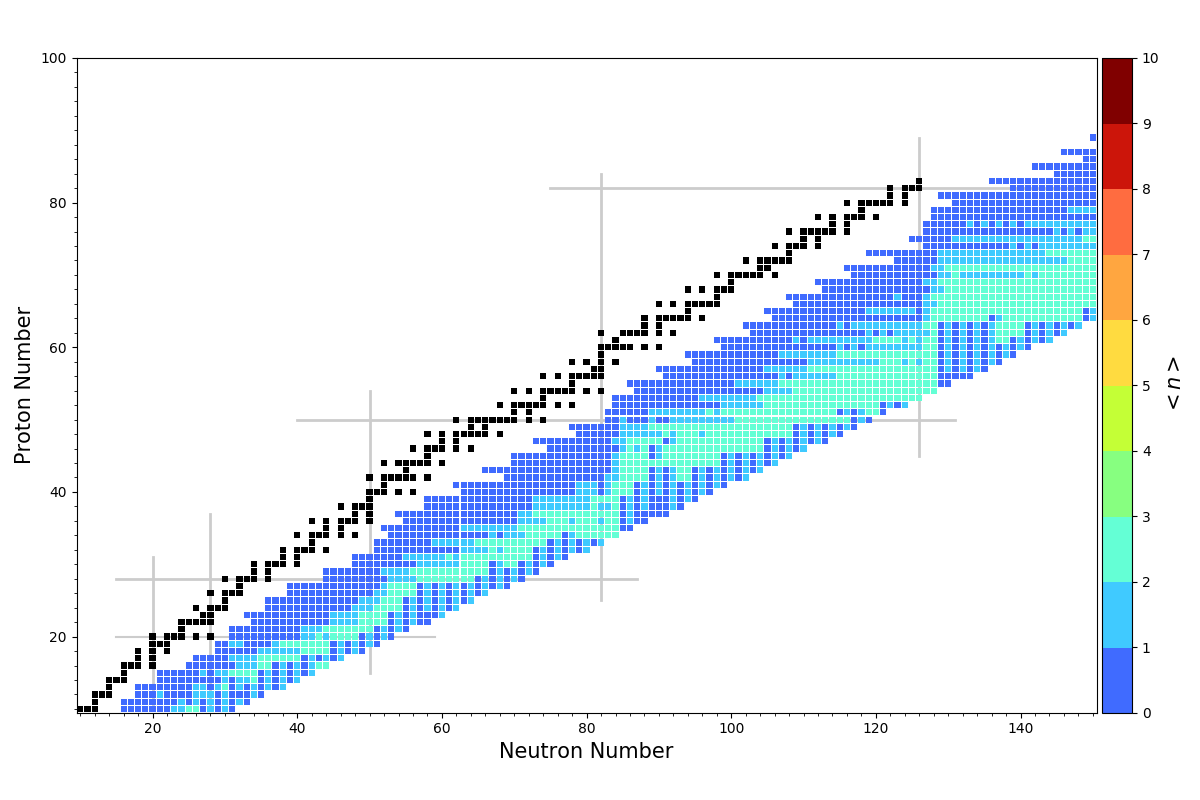
Apply energy window method to the entire chart of nuclides
Problem with describing very neutron-rich nuclei
Average neutron emission
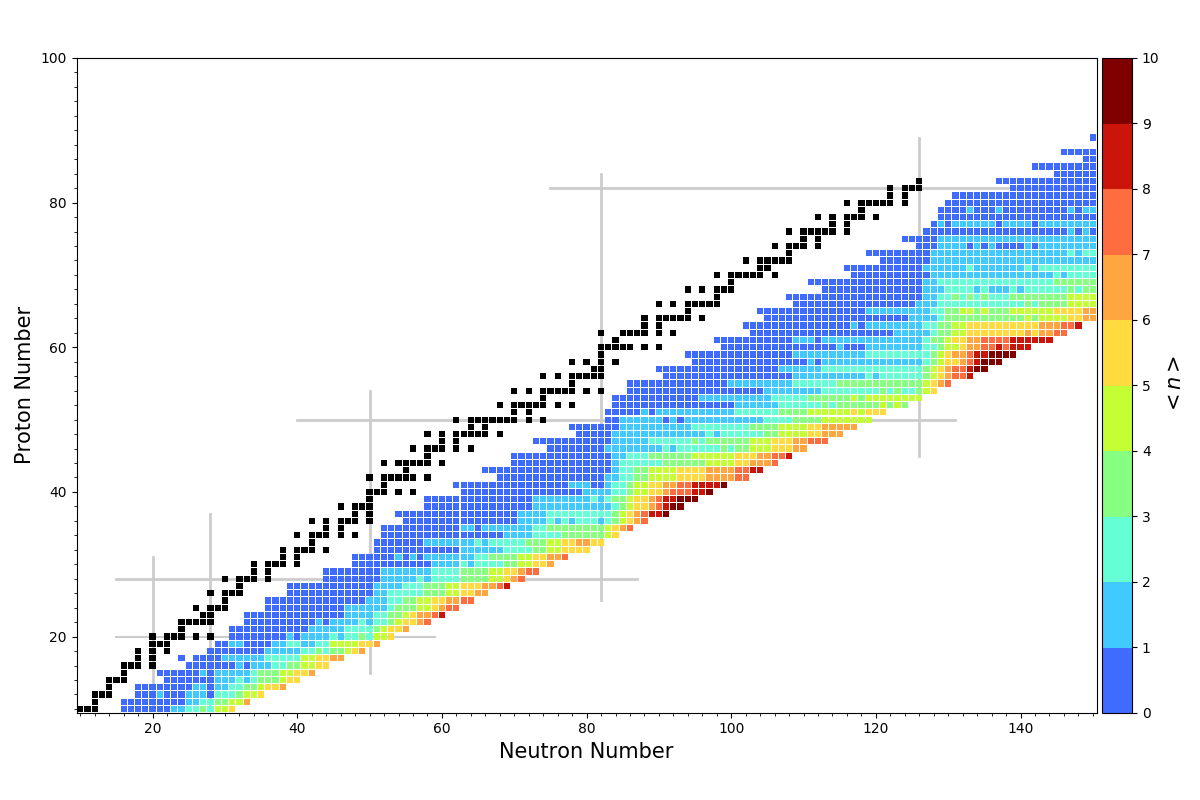
Apply the QRPA+HF method to the entire chart of nuclides
Problem with neutron-rich nuclei goes away
Extensive benchmarking
QRPA+HF GT-only $\beta$-strength are within 15% of measured $P_{1n}$ values
Adding FF transitions improves the match to measured data by 3%
Using measured masses improves the match to measured data by 3%
This yields a roughly 9% global model uncertainty to measured $P_{1n}$ values
The best in the business!
Can we extend this model to other phenomena ... fission?
Extension to $\beta$ df
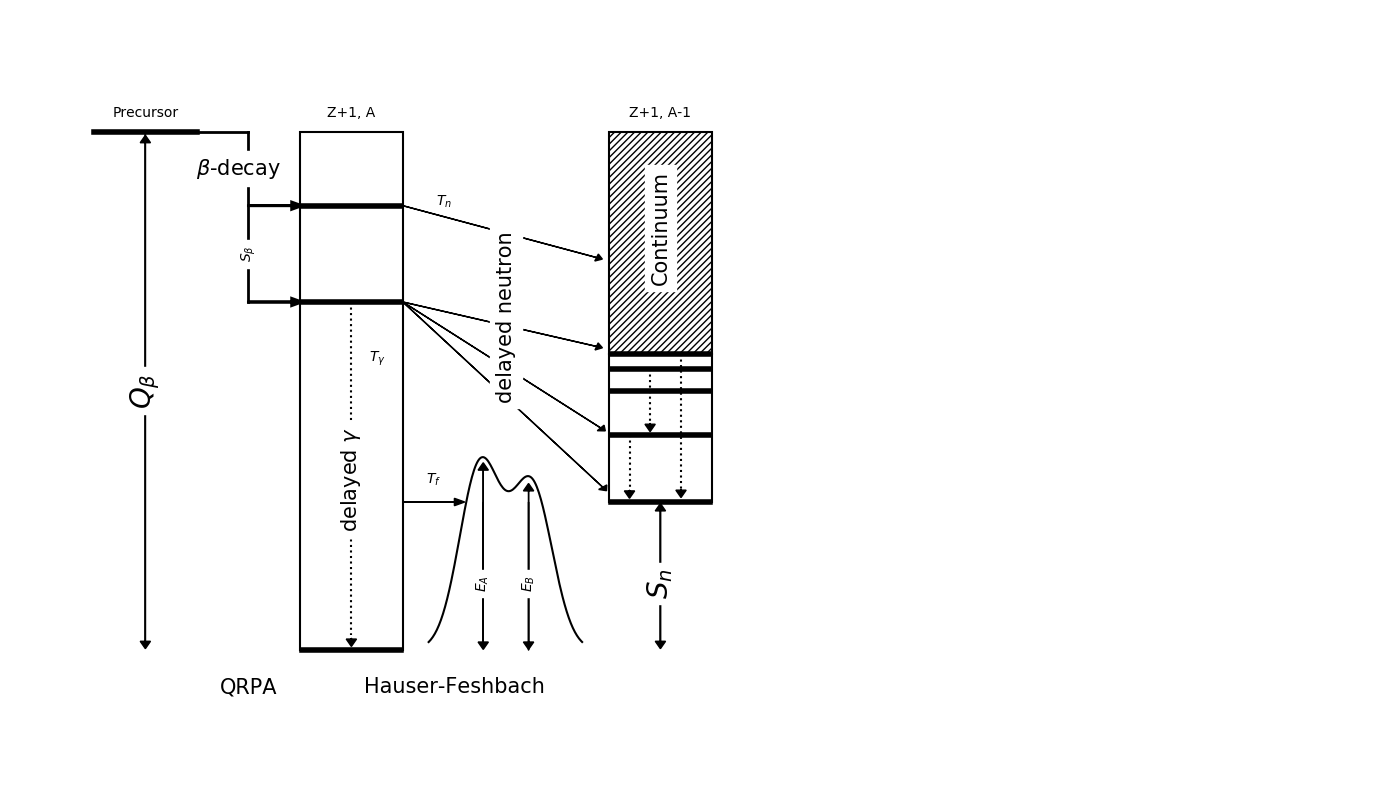
We have recently extended the model to describe $\beta$-delayed fission ($\beta$df)
Barrier heights from Möller et al. PRC 91 024310 (2015)
Assumes a Hill-Wheeler form for fission transmission
Multi-chance $\beta$ df
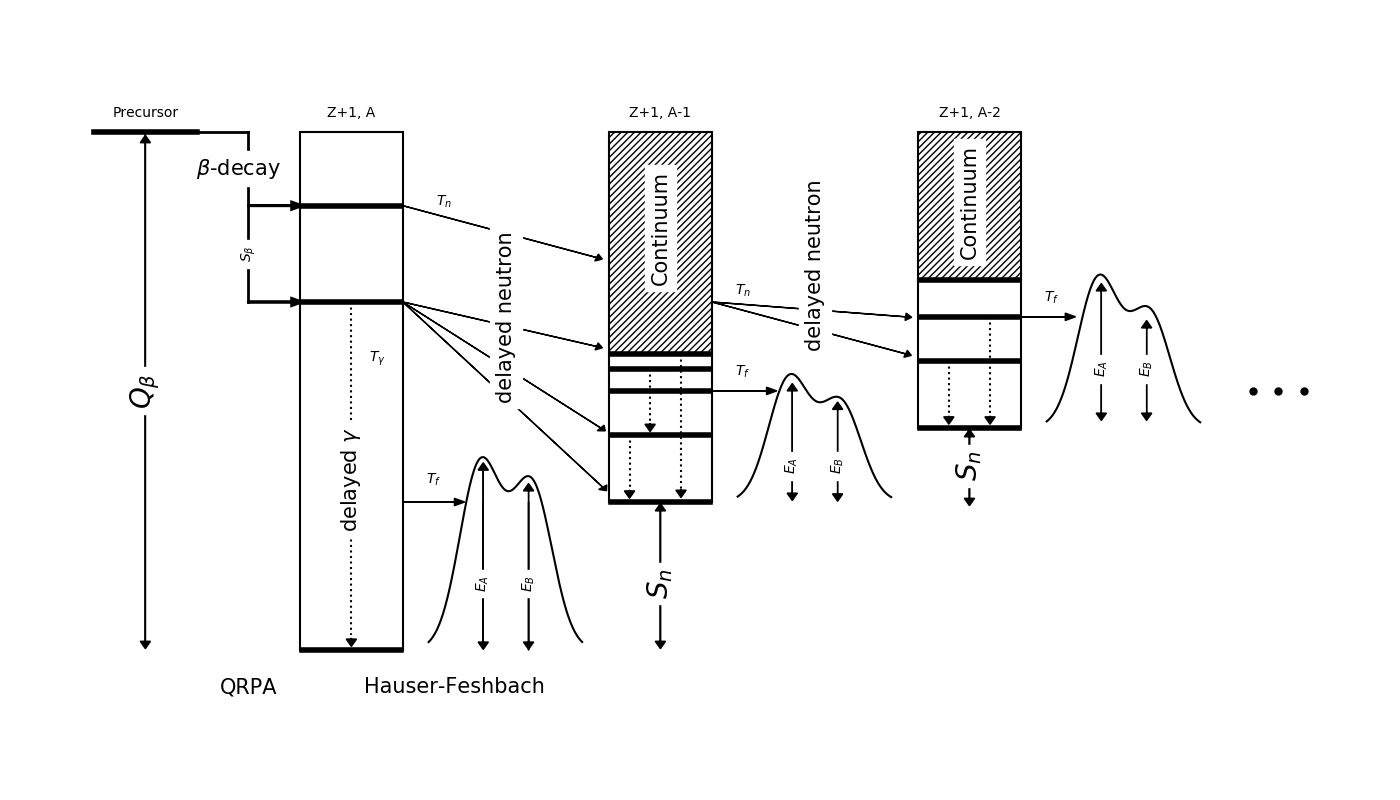
Recall: Near the dripline $Q_{beta}$ ⇡ $S_{n}$ ⇣
Multi-chance $\beta$df: each daughter may fission
The yields in this decay mode are a convolution of many fission yields!
($n$,$\gamma$,$f$) competition
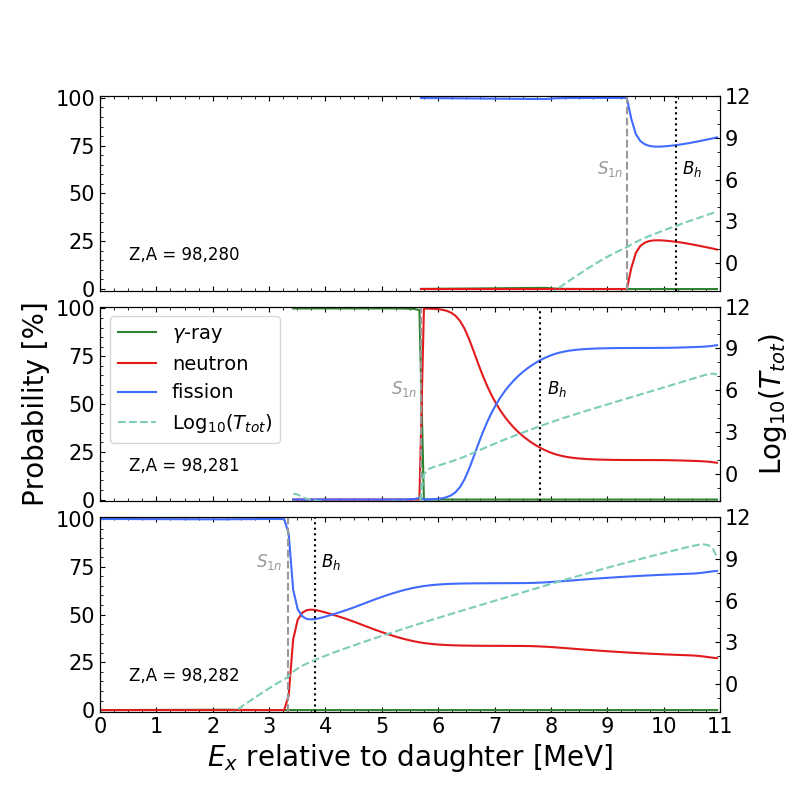
Fission can successfully compete with $\gamma$-rays and neutrons
Cumulative $\beta$ df probability
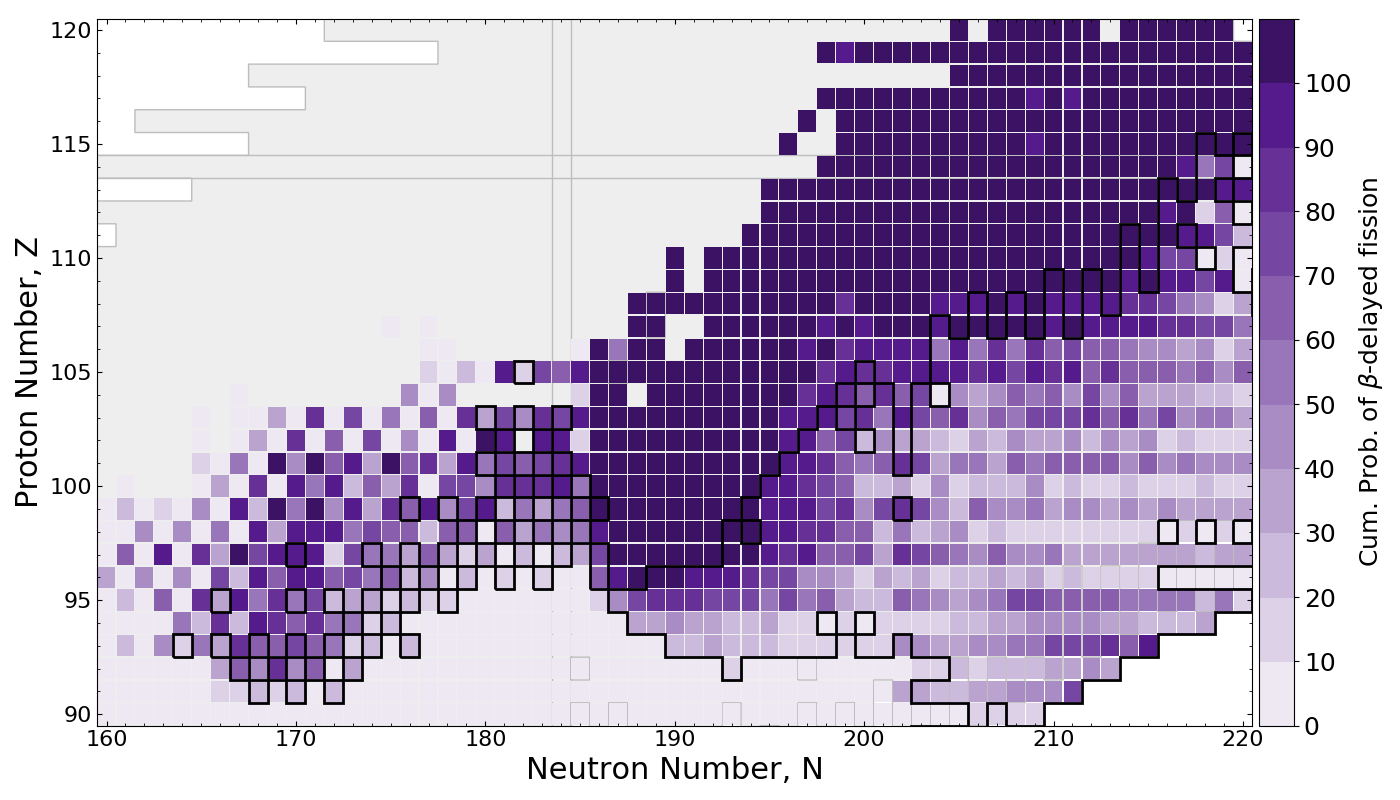
$\beta$df occupies a large amount of real estate in the NZ-plane
Multi-chance $\beta$df outlined in black
Application to the $r$-process
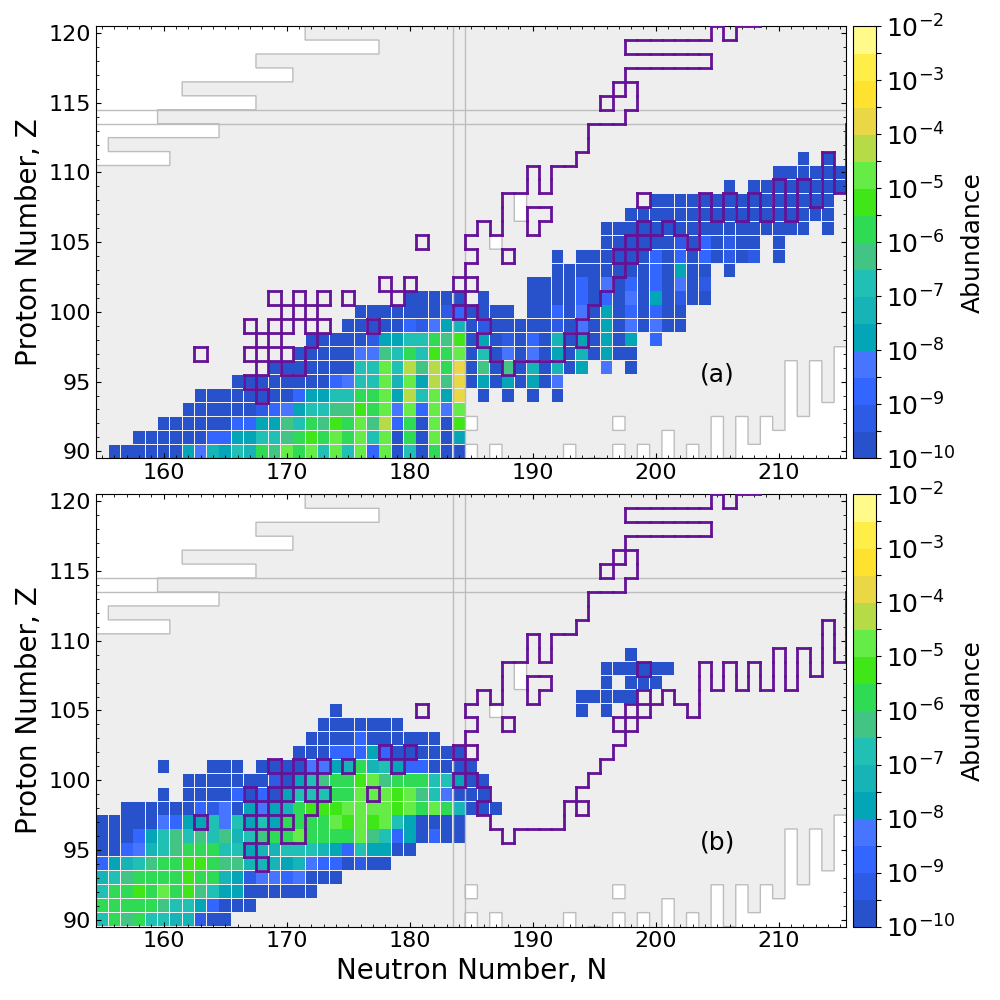
Network calculation of neutron star merger ejecta
$\beta$df alone prevents the production of superheavy elements in nature
N=126 Factory
The N=126 Factory
Probe nuclei FRIB may have trouble producing...
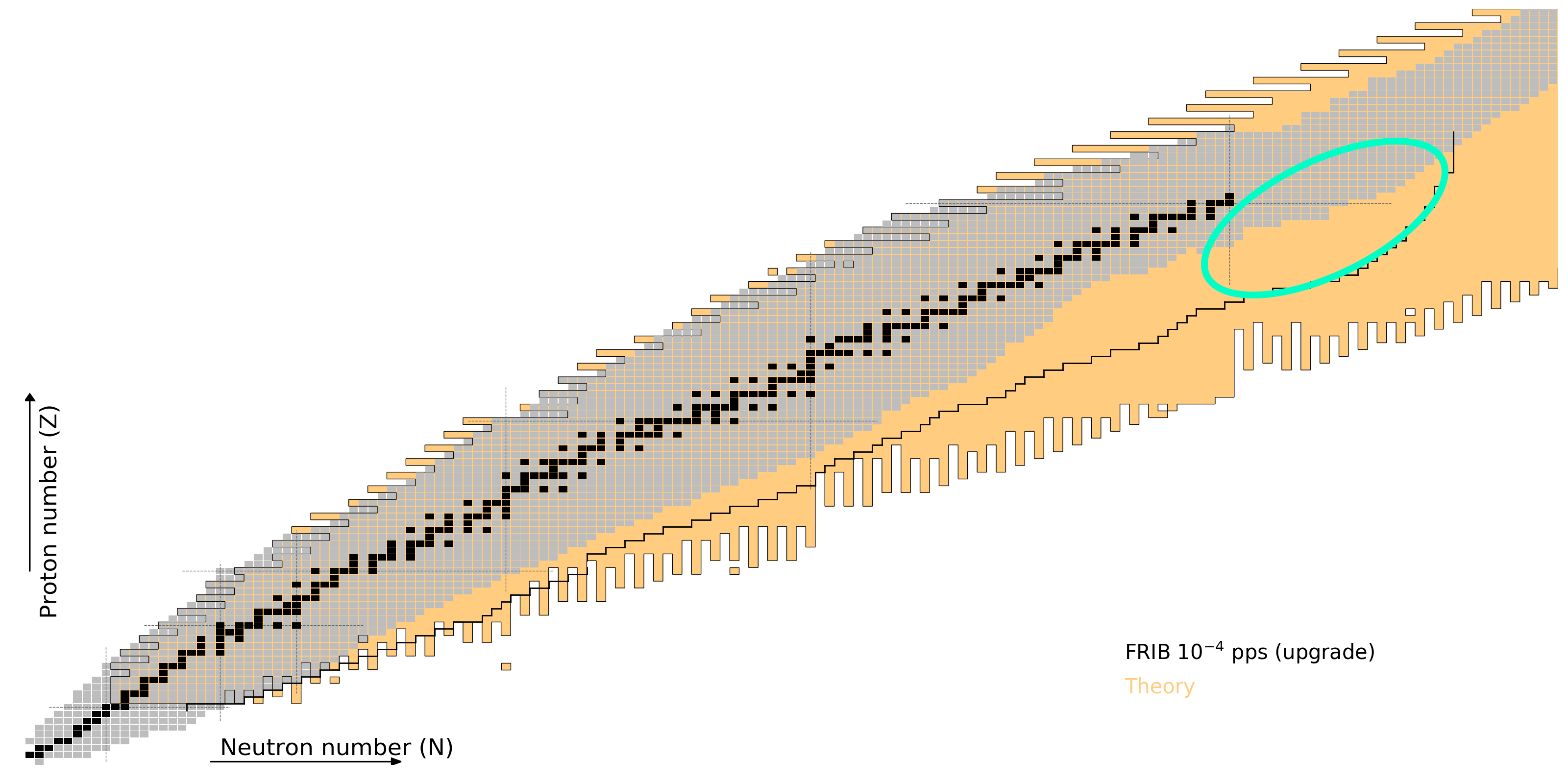
Importance for the $r$-process
A dirty secret: nucleosynthesis simulations have trouble reproducing
(1) the peak height and (2) the position of the A=195 peak (due to the N=126 shell closure)
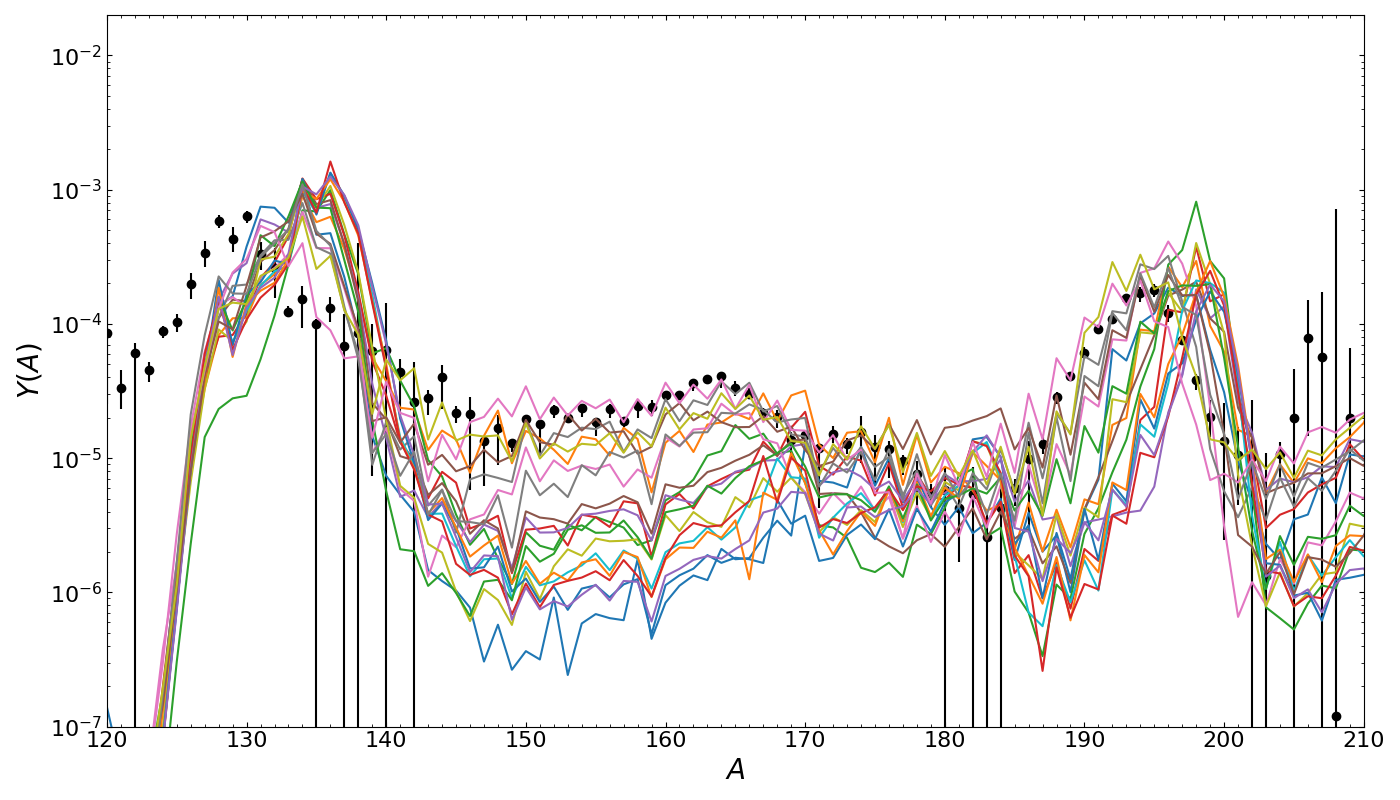
Final abundances using 20 mass models given the same astro. conditions
The N=126 factory can help us to understand the evolution of shell structure, GT vs FF contributions and will greatly impact $r$-process calculations
The N=126 shell closure acts as the gatekeeper to fission recycling
Critical for understanding actinide production

Is there any precursor to show that actinide nucleosynthesis has occurred in an event?... YES!
The spontaneous fission of $^{254}$Cf primary contributor to nuclear heating at late-time epochs
The $T_{1/2}\sim 60$ days but yield distribution is not well constrained
Calculated yield
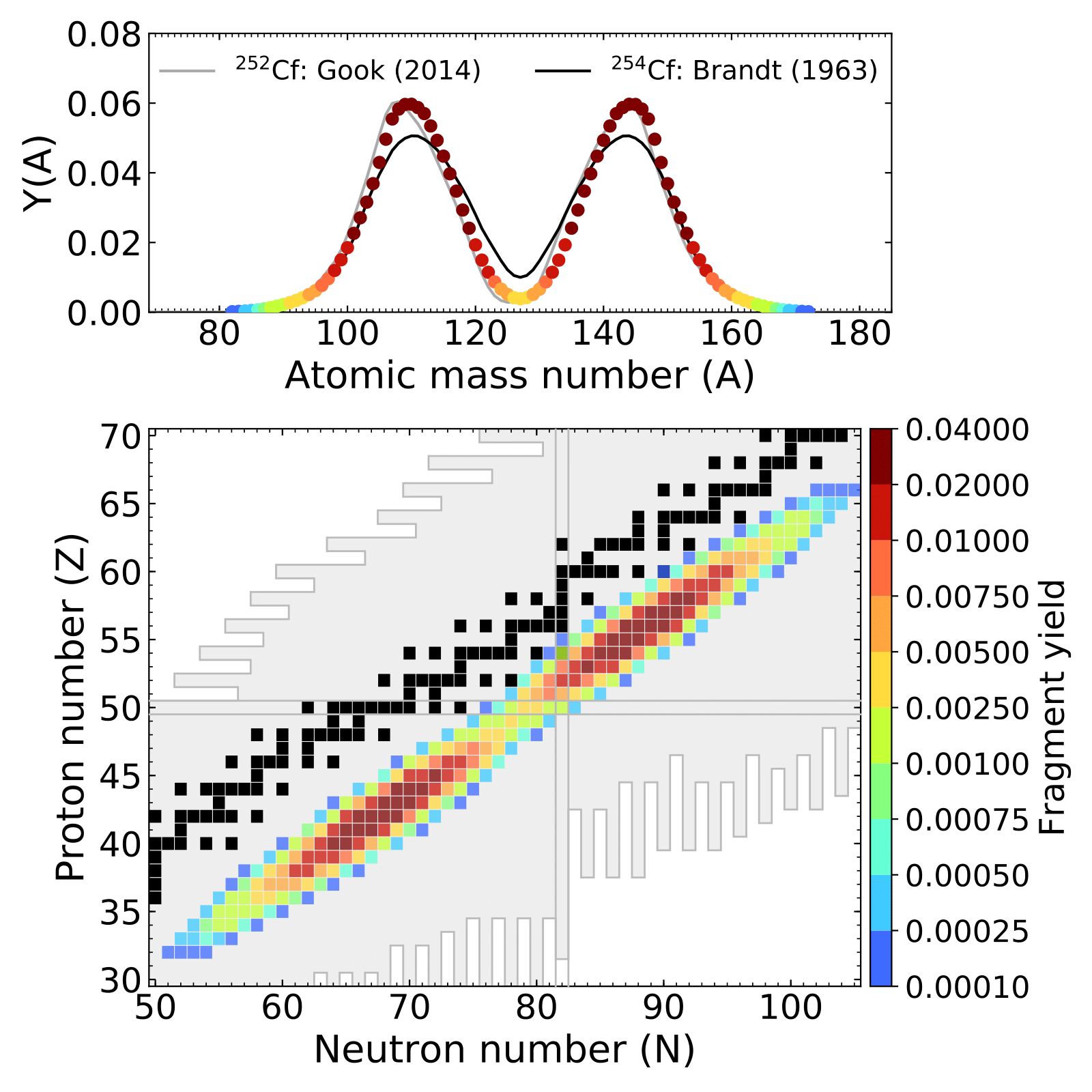
Observational Impact
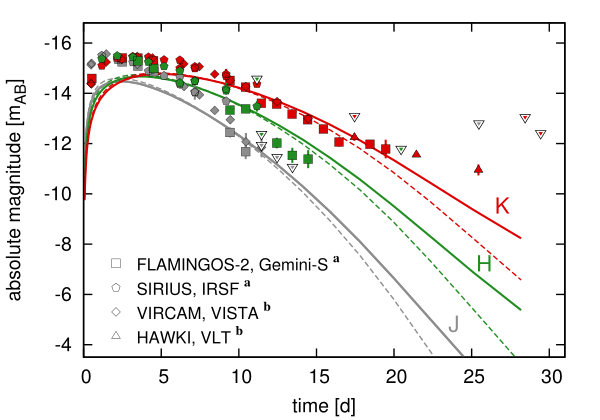

Both near- and middle- IR are impacted by the presence of $^{254}$Cf
Late-time epoch brightness can be used as a proxy for actinide nucleosynthesis
Future JWST will be detectable out to 250 days with the presence of $^{254}$Cf
This is all directly tied to the strength of the N=126 shell closure!
Special thanks to
My collaborators
A. Aprahamian, J. Clark, E. Holmbeck, P. Jaffke, T. Kawano, O. Korobkin, S. Liddick, G. C. McLaughlin, P. Möller, R. Orford, J. Randrup, G. Savard, A. Sierk, T. Sprouse, A. Spyrou, R. Surman, N. Vassh, M. Verriere, J. Wu, Y. Zhu
& many more...
▣ Students ▣ Postdocs
Summary
The binary neutron star merger event, GW170817, was recently observed using both gravitational waves and electromagnetic signals
It has answered some questions while opening others...
Robust models of nuclear physics are required to understand the abundance and electromagnetic signatures from the heavy element nucleosynthesis that may ensue from such events
Astrophysics can be used as an alternative benchmark for nuclear models, in addition to experimental data / evaluations
An effort to improve nuclear modeing is ongoing at LANL
Collaboration between Argonne & Los Alamos has been very successful with many projects to come!
Results at MatthewMumpower.com
Extra Slides
Actinide Boost
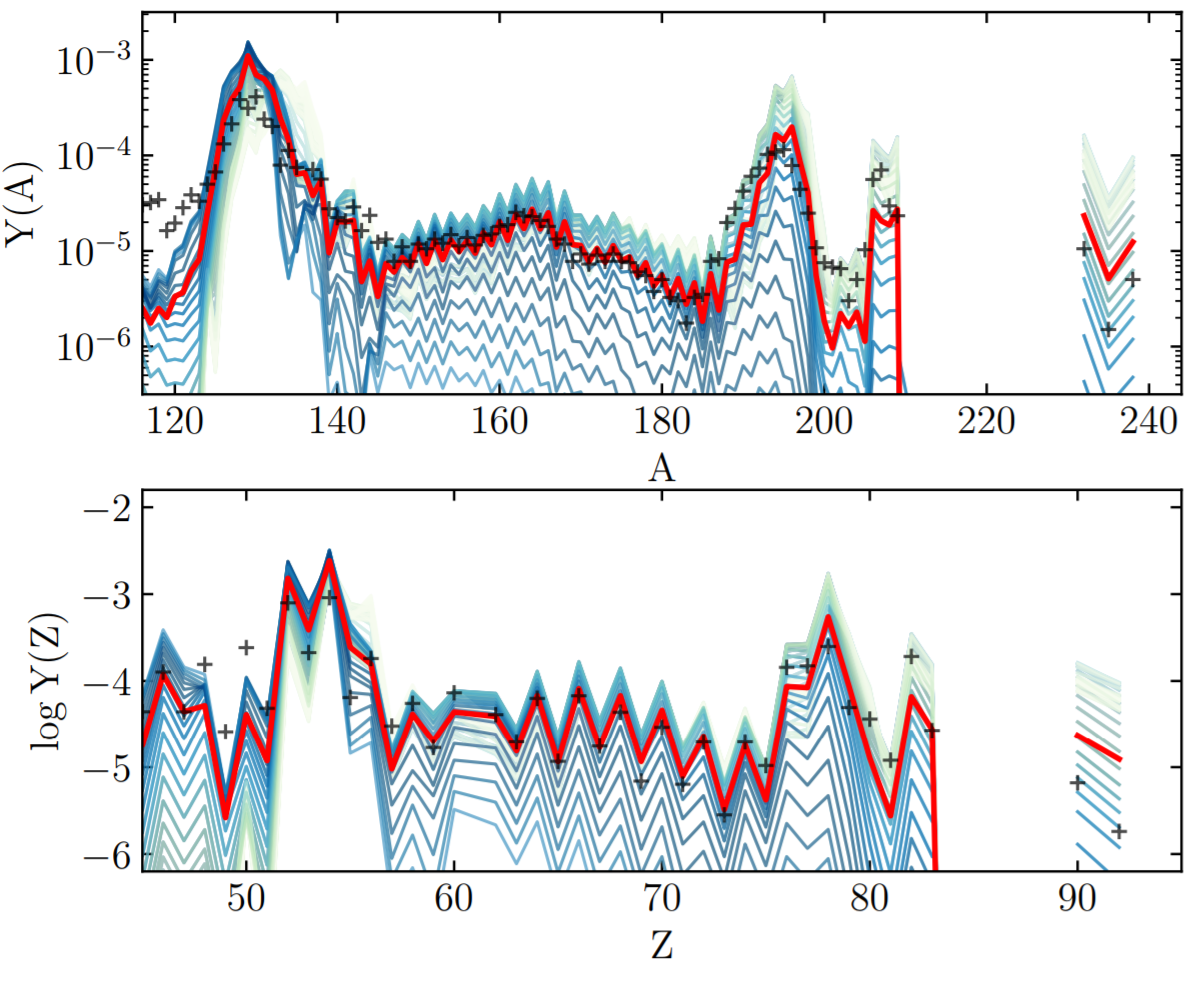
If actinides are produced, they are always overproduced versus lanthanides / rare earth elements
A sufficient amount of dilution with ligher $r$-process material is required to match the solar isotopic residuals over a range of Z & A
Impact on final abundances
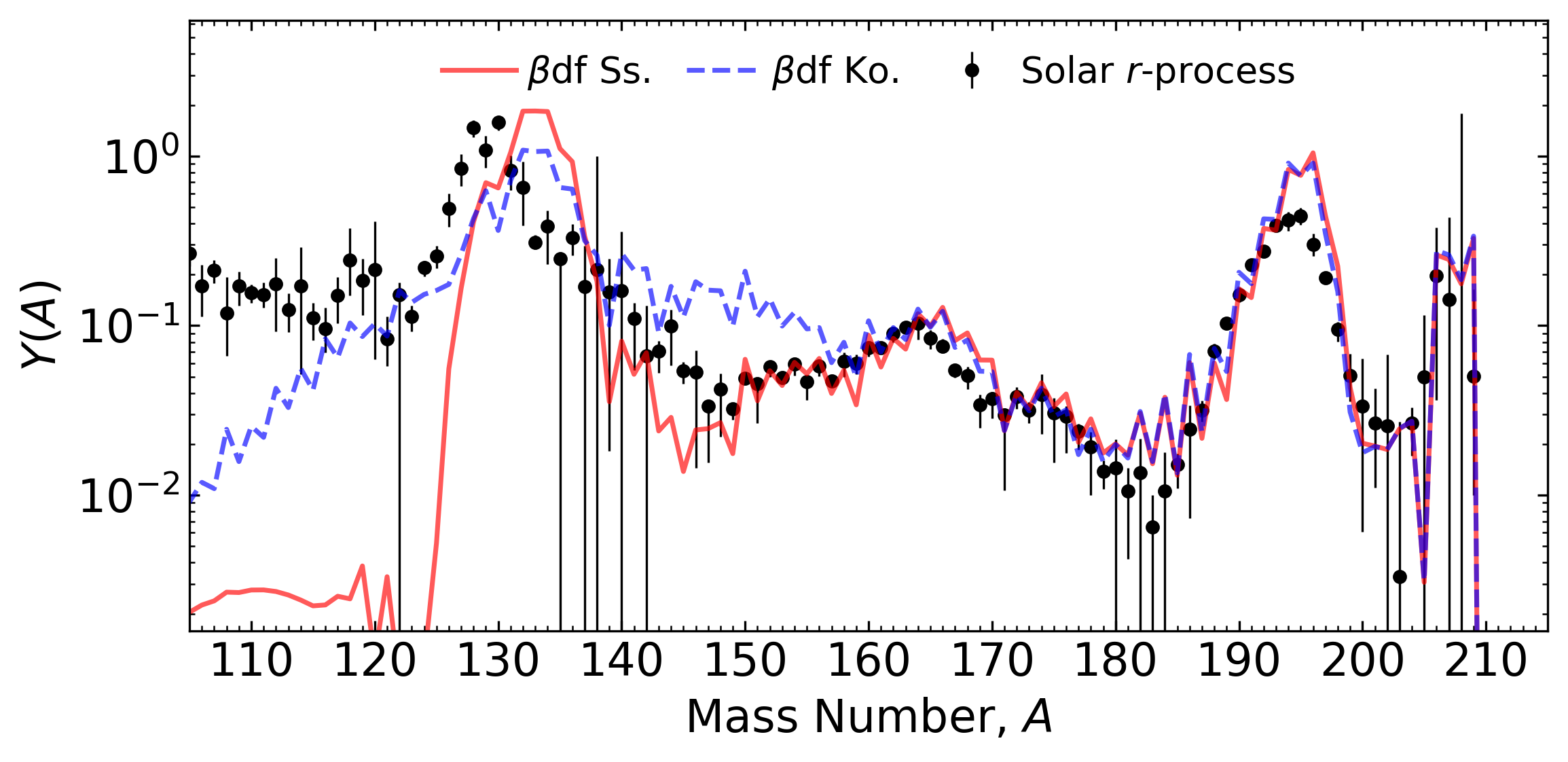
Network calculation of neutron star merger ejecta; FRDM2012 inputs
$\beta$df can shape the final pattern near the $A=130$ peak
Multi-chance $\beta$ df contribution
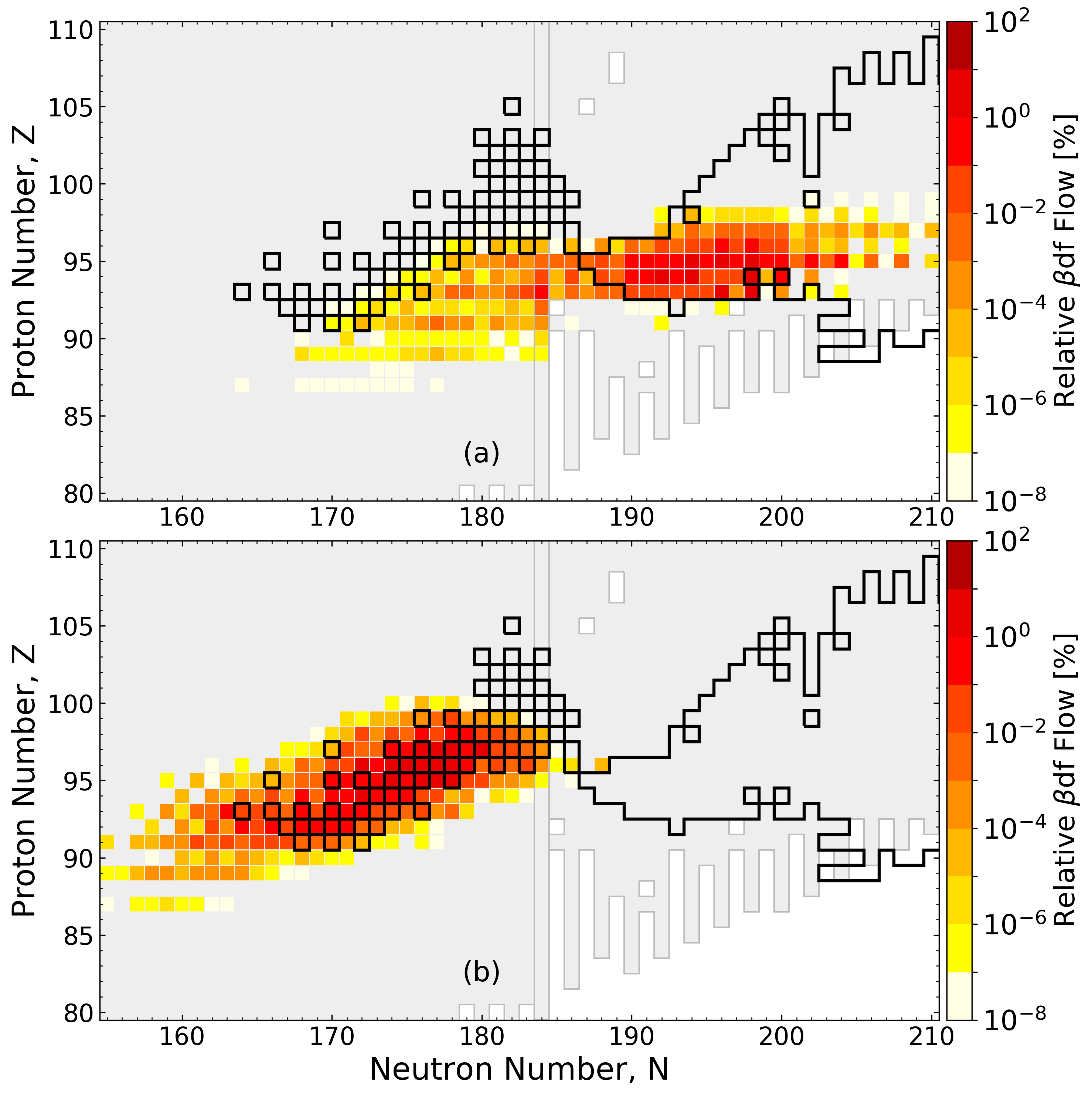
Network calculation of neutron star merger ejecta; FRDM2012 inputs
Multi-chance $\beta$df contributes at both early and late times